First post, by VooDooMan
- Rank
- Member
“TualGod” project is, in a way, a continuation of the fastest socket 370 motherboard thread I started in 2018.
This time I wanted to focus only on the 5 best chipset for socket 370 based platforms and present the way they perform when overclocked to 166 MHz. I will be comparing those overclocked results(166 MHz FSB) with the regular ones from 2018(133 MHz FSB)
Why “TualGod?
The term “TualKing” is often referred to the fastest Pentium III-S CPU (1400 MHz) so I came up with this silly idea of a “TualGod” meaning the overclocked version of this CPU at 166 MHz FSB (1743 MHz to be correct, but I in fact it’s often closer to 1750 MHz – 10,5 x 166,6 = 1749,3) so let’s assume that the CPU frequency is “1750” MHz everytime I use this idiotic phrase.
Naturally, to make the whole thing come to life I had to select proper RAM and CPU 😉
Aims of this project:
- To present the FASTEST overclcoked platform for the “TualGod” CPU.
- To compare the performance gain from 133 MHZ to 166 FSB.
- To find an AthlonXP and Pentium4 equivalent to “Tualgod”.
- To build very fast P3 machine which runs 2003-05 games.
Analysed motherboards/chipsets:
- ECS P6S5AT (SiS 635T) - one of the best options for high performance Pentium 3 systems. No ISA.
- ABIT ST6 (Intel I815EP) – stable and reliable, last time I used ASUS TUSL2-C, Some come with an ISA bridge.
- ABIT BX133 (Intel BX440) – a super fast legend, last time I used ABIT BE6-2, ISA supported.
- ASUS CUV266 (VIA VIA VT8633) – DDR board om VIA, no native Tualatin support, NO ISA.
- ABIT VH6-T (VIA 694T) - SDR board with VIA chipset, native tualatin support, ISA possible.
Everything tested on Windows98SE and GeForce 4 Ti 44.03 drivers.
How well do those chipsets overclock?
- I815 is know for great overclocking potential and so it was in my case. I had absolutely zero problems with achieving stable 166 MHz FSB clock. So the first place goes to this chipset.
- Numer 2 on this list: VIA 694T – I was surprised how easy it was to reack 166 MHz on this mobo. Besides for 1 or 2 crashes in 3D MARK 2001(probably due to AGP 4x issues...), I had almost no problems at all to complete all the tests.
- VIA VT8633 – Things were not so easy with this one. First of all I had to use an adaptor to make Tualatin CPU work with this mobo. I don’t know why but it refuses to work with certain ram at 166 MHz, and the timings had to be a bit loose(2,5-2-2-6) There were some crashes once in a while, but all in all I finally got to finish all the tests.
- SiS 635T – well… to reach 166 MHz with this mobo took me several years… so what more can I say about it? 😁 IT’s hard to count all the hours spent on finding information, selecting proper components, modding stuff and testing things to achieve that goal but I am extremely glad that it eventually worked 😀
- Intel BX440 – now this is moment, where I had to give up at one point… we all know that everything beyond 100 MHz is already an overclock for this mobo so maybe that stable 166 MHz frequency with a Tualatin CPU (which was never supposed to work with this initially) is just impossible to accomplish? I tried my luck on several BX boards. The first try was ABIT BE6-II but I coud not log into windows no matter how hard I tried(instant freeze after seeing windows98 logo). Finally, I switched to ABIT BX133 and was able to barely finish some tests… But it was faaar from stable. 66 % overclock seems a little bit too much for this chipset… Maybe that is why you won’t even find an option to set your FSB at 166 MHz on such legendaty boards like ASUS P3B-F nor ABIT CUBX….
Before we start, I think it’s crucial to point out what the AGP and PCI frequencies are when we overclock those particular chipsets to 166 MHz:

We can see that the BX chipset is heavily overclocked when it comes to AGP frequency. The most fascinating thing to me is that SiS 635T is the only chipset that DOES HAVE the proper AGP/PCI dividers for 166 and even 200 MHz! I have proven that before in this thread.
Let’t take a look at the partial 166 MHZ OC results on each platform first:
6) VIA 694T
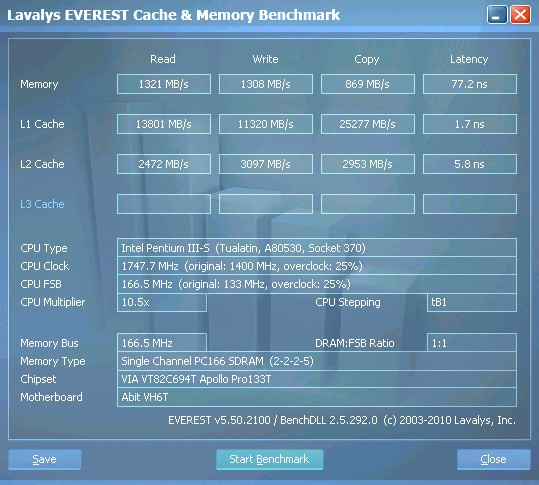
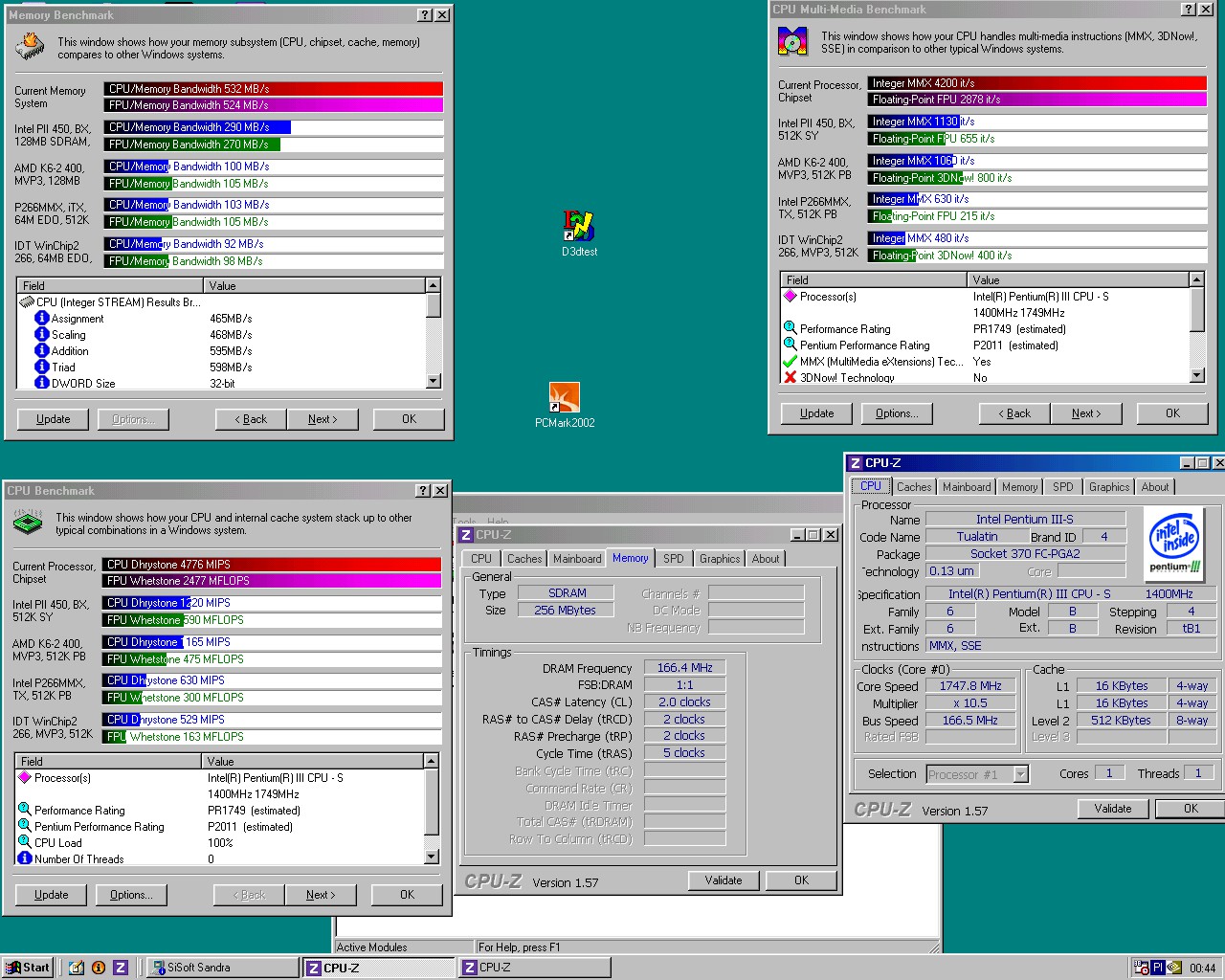
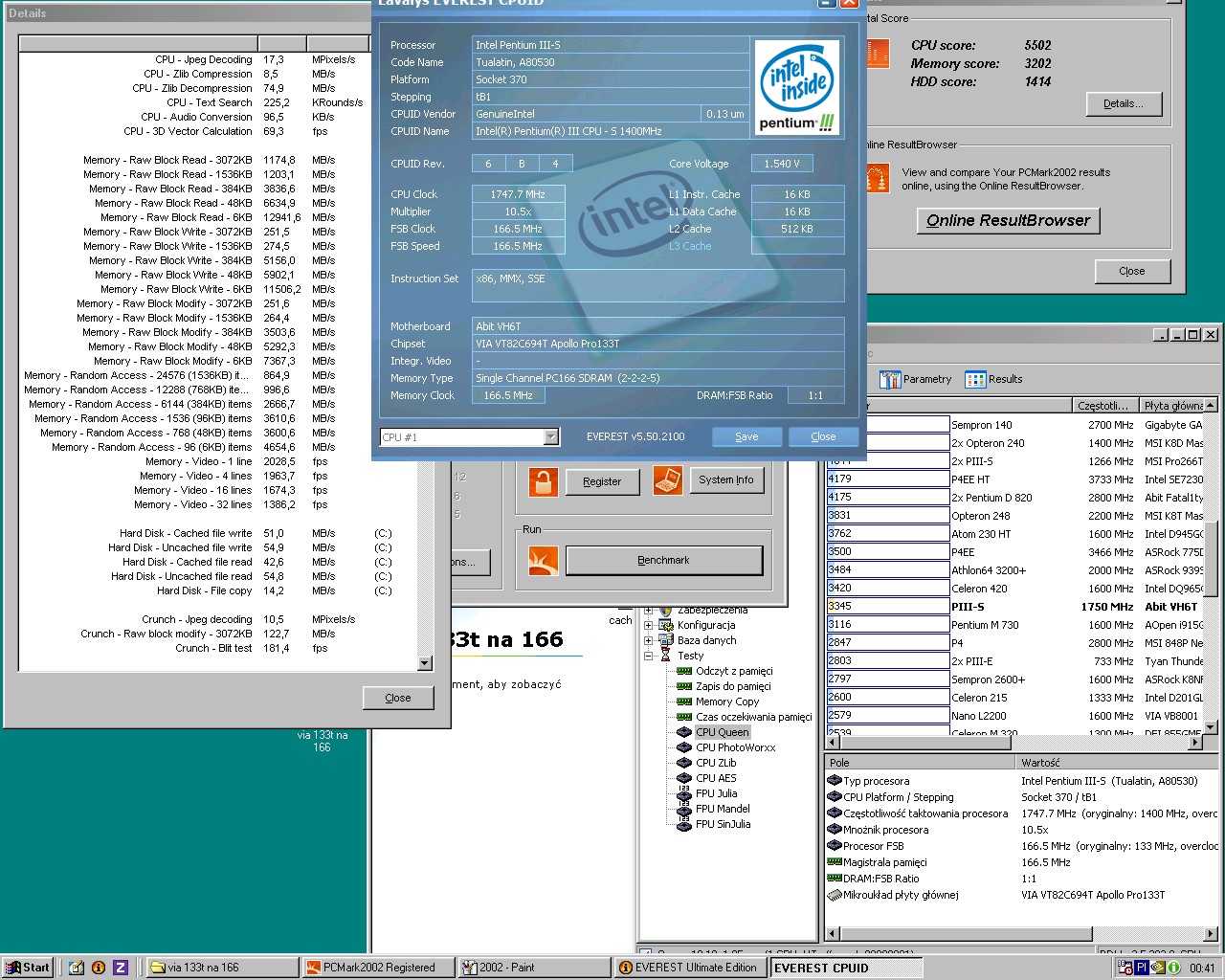
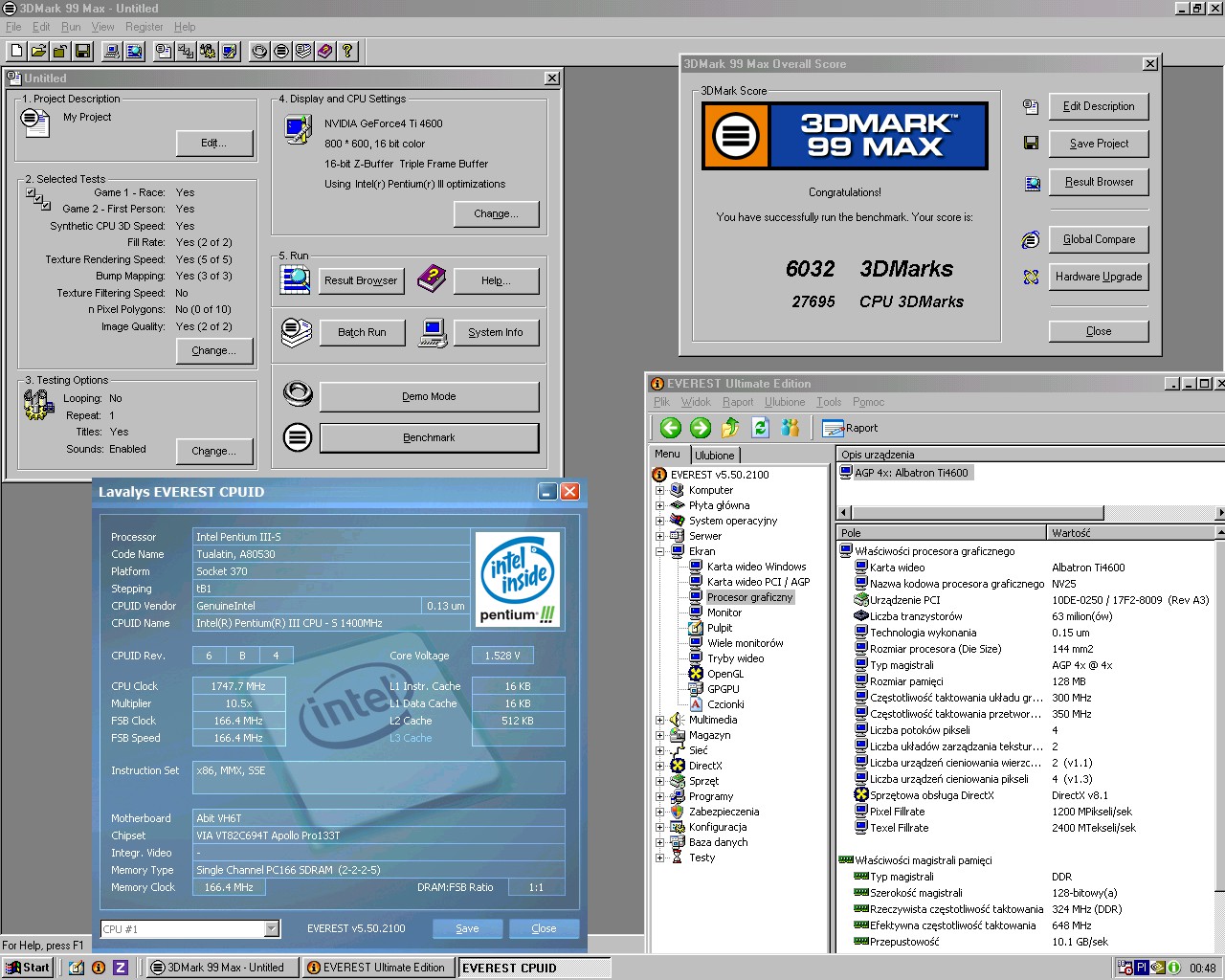
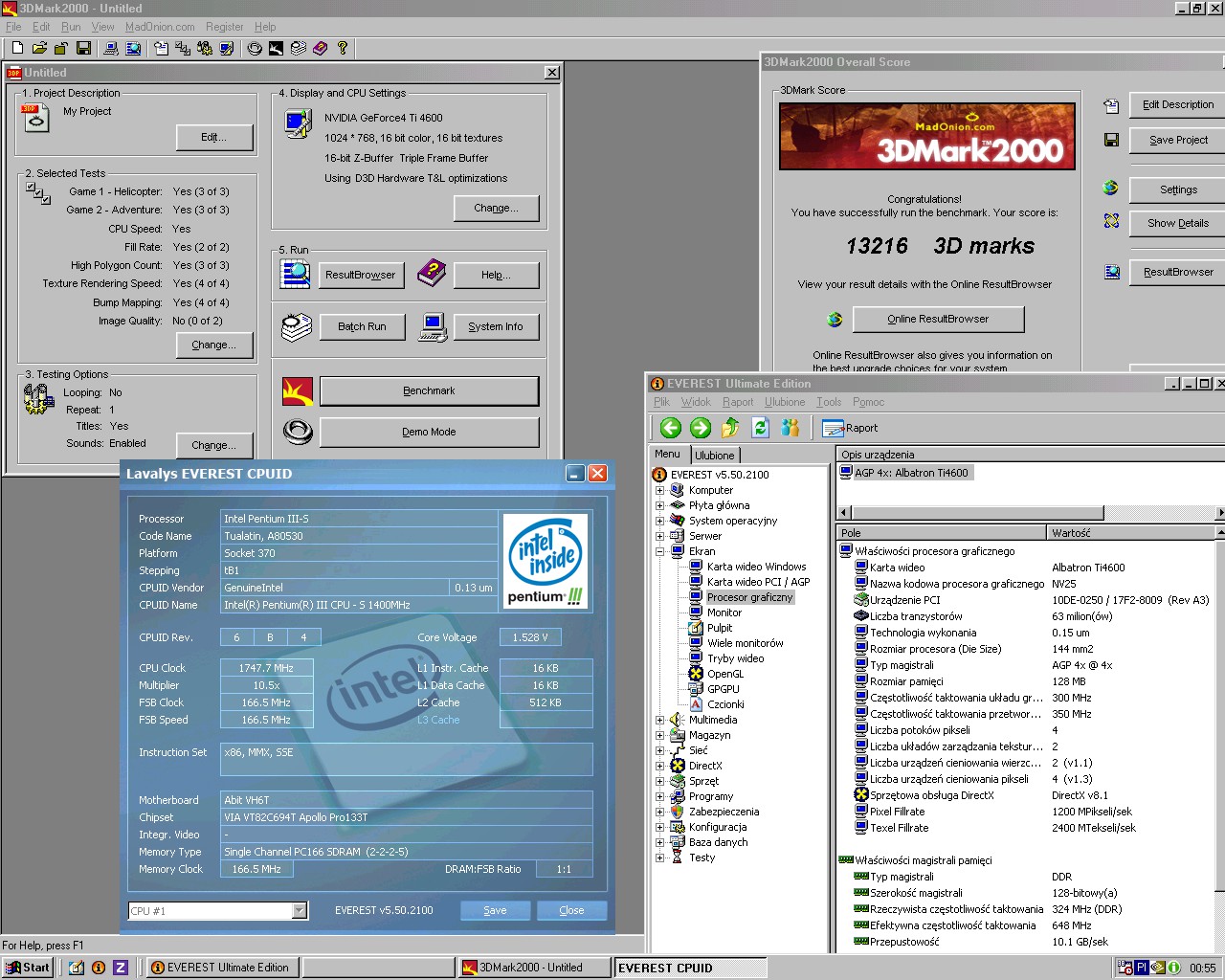
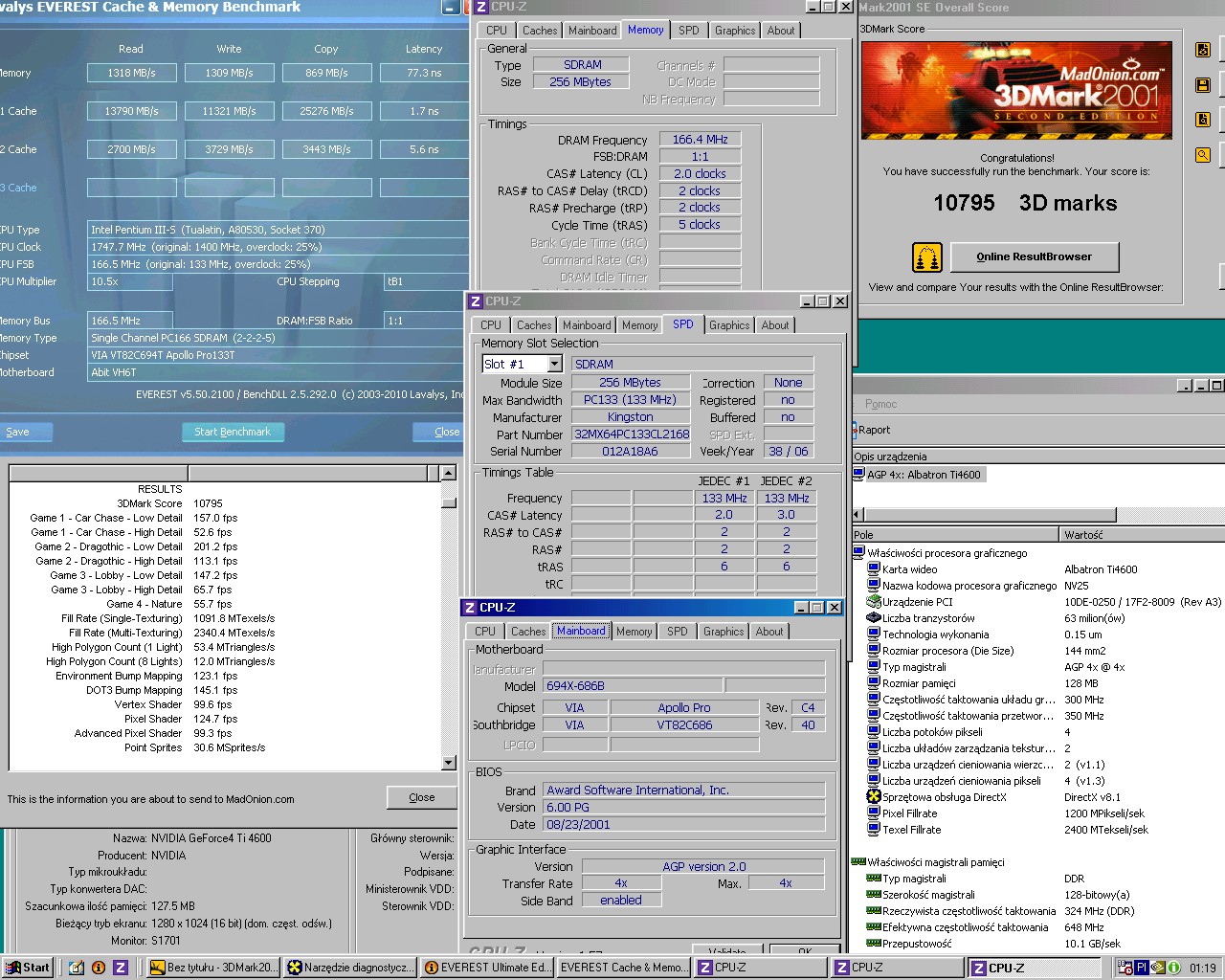
5) Intel i815
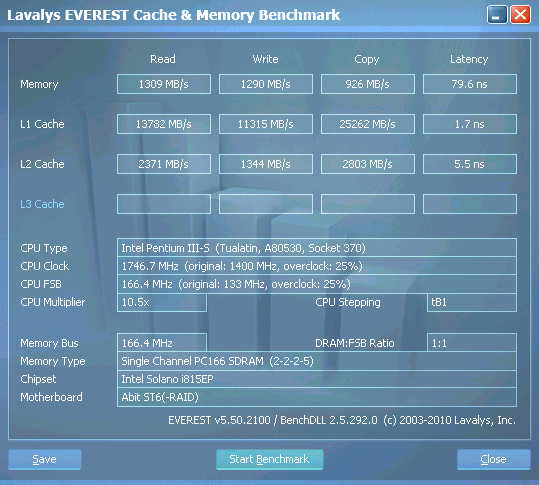
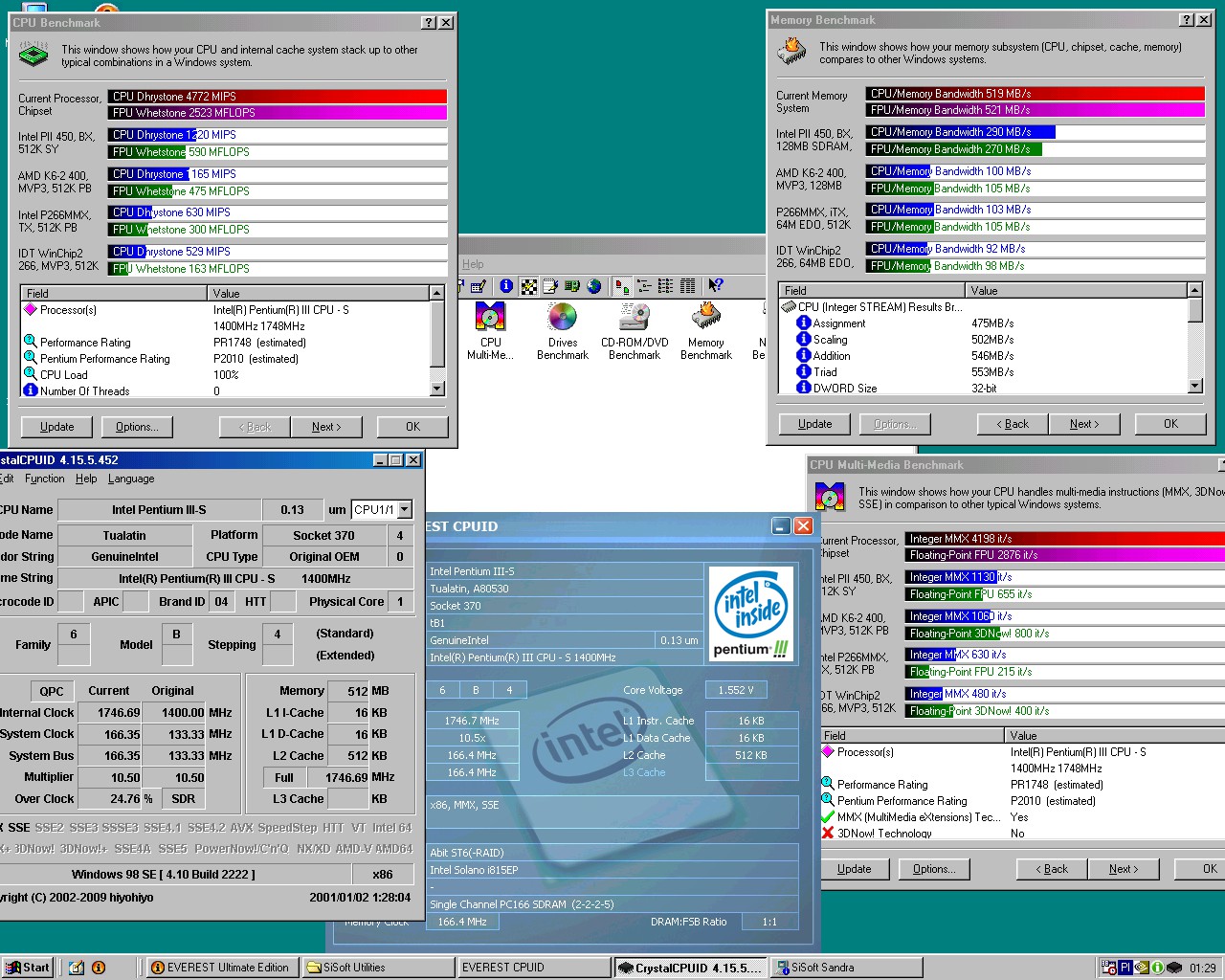
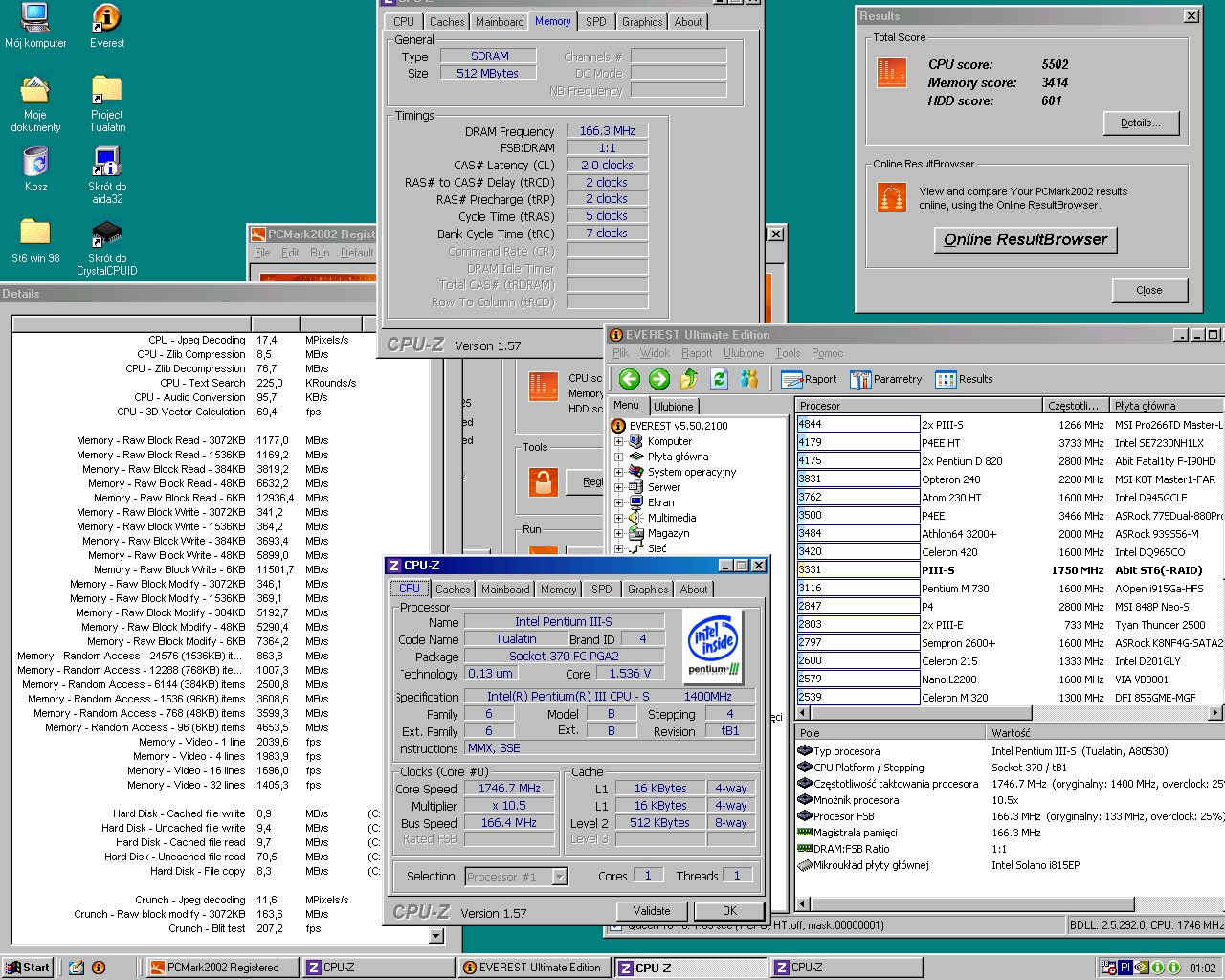
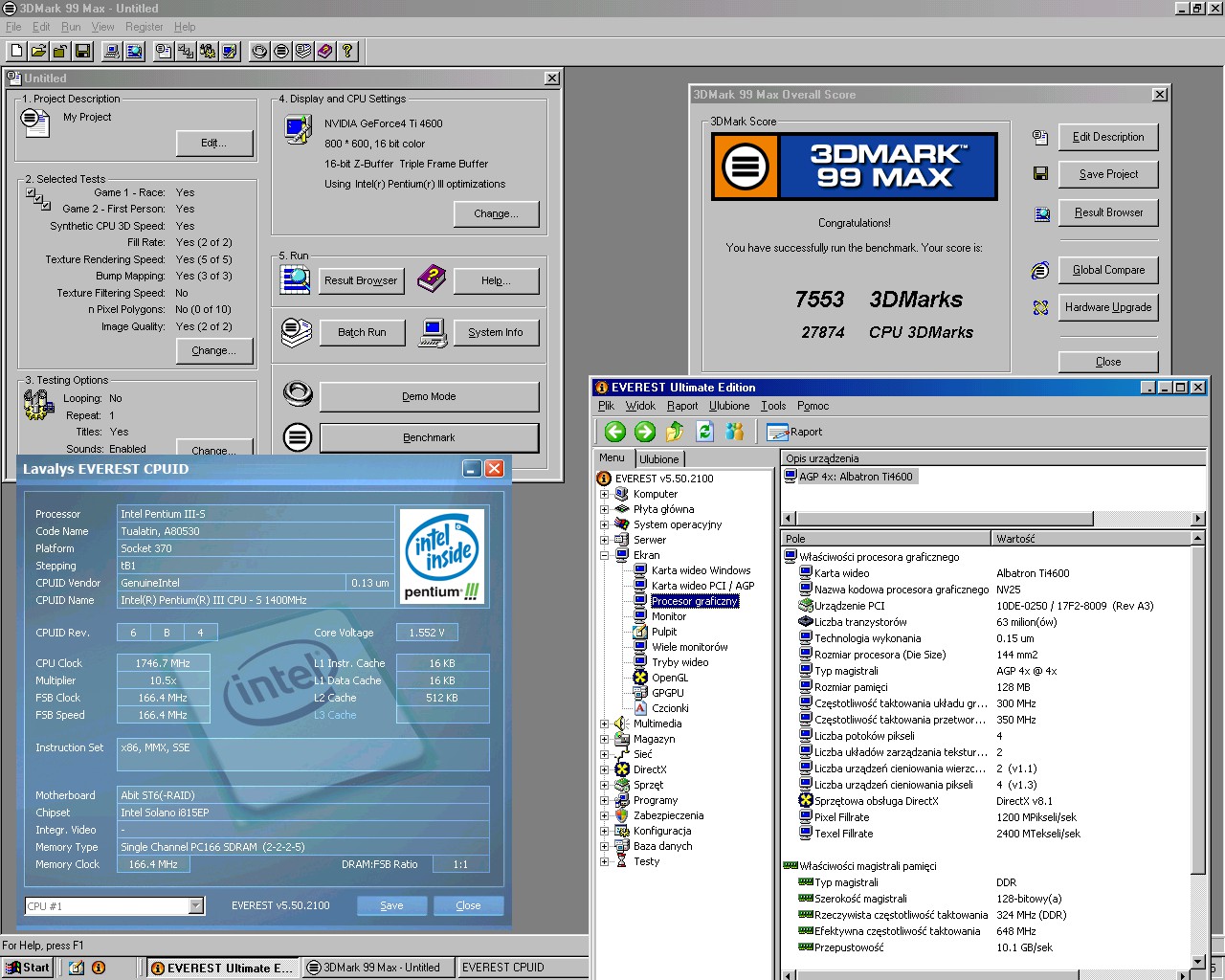
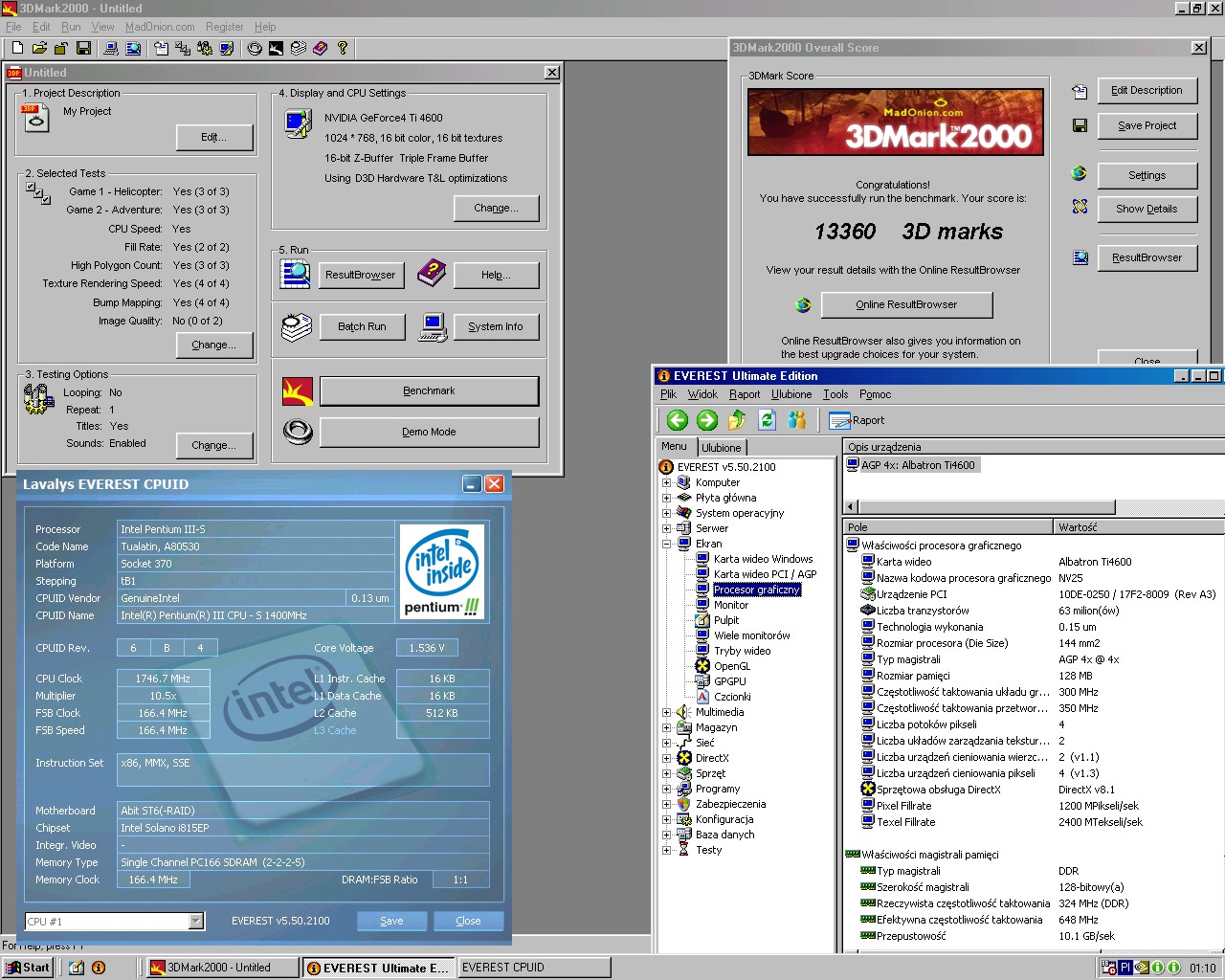
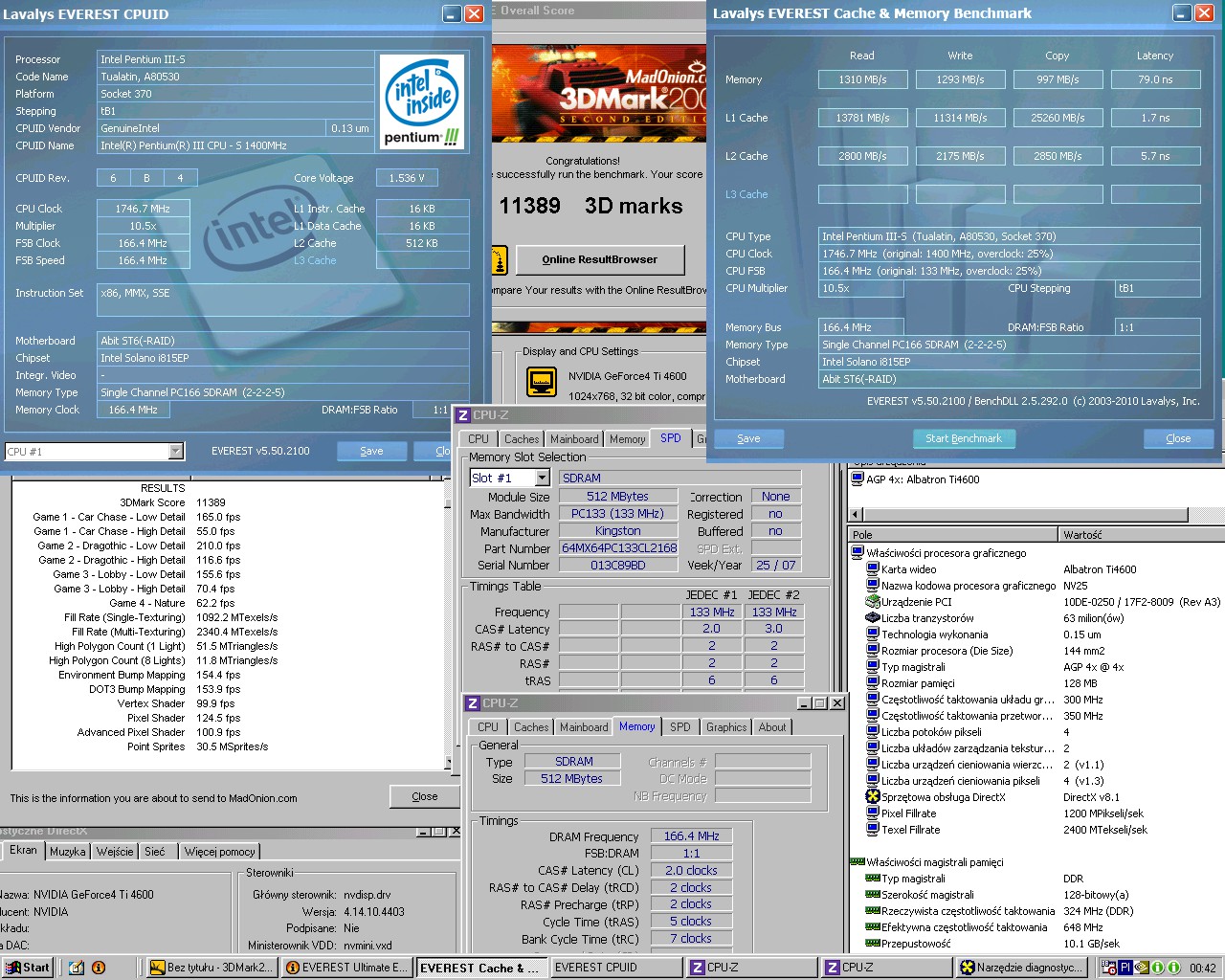
4) SiS 635T SDR
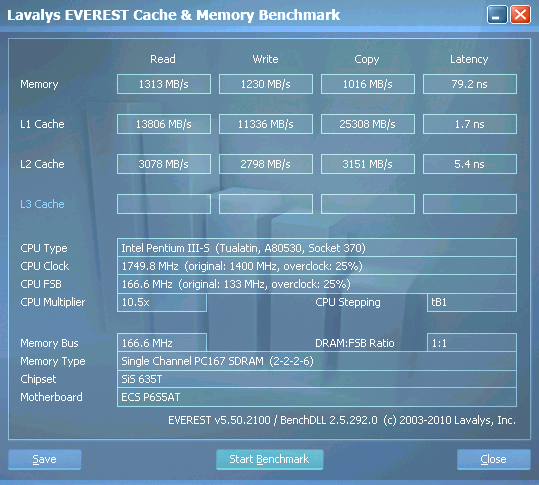
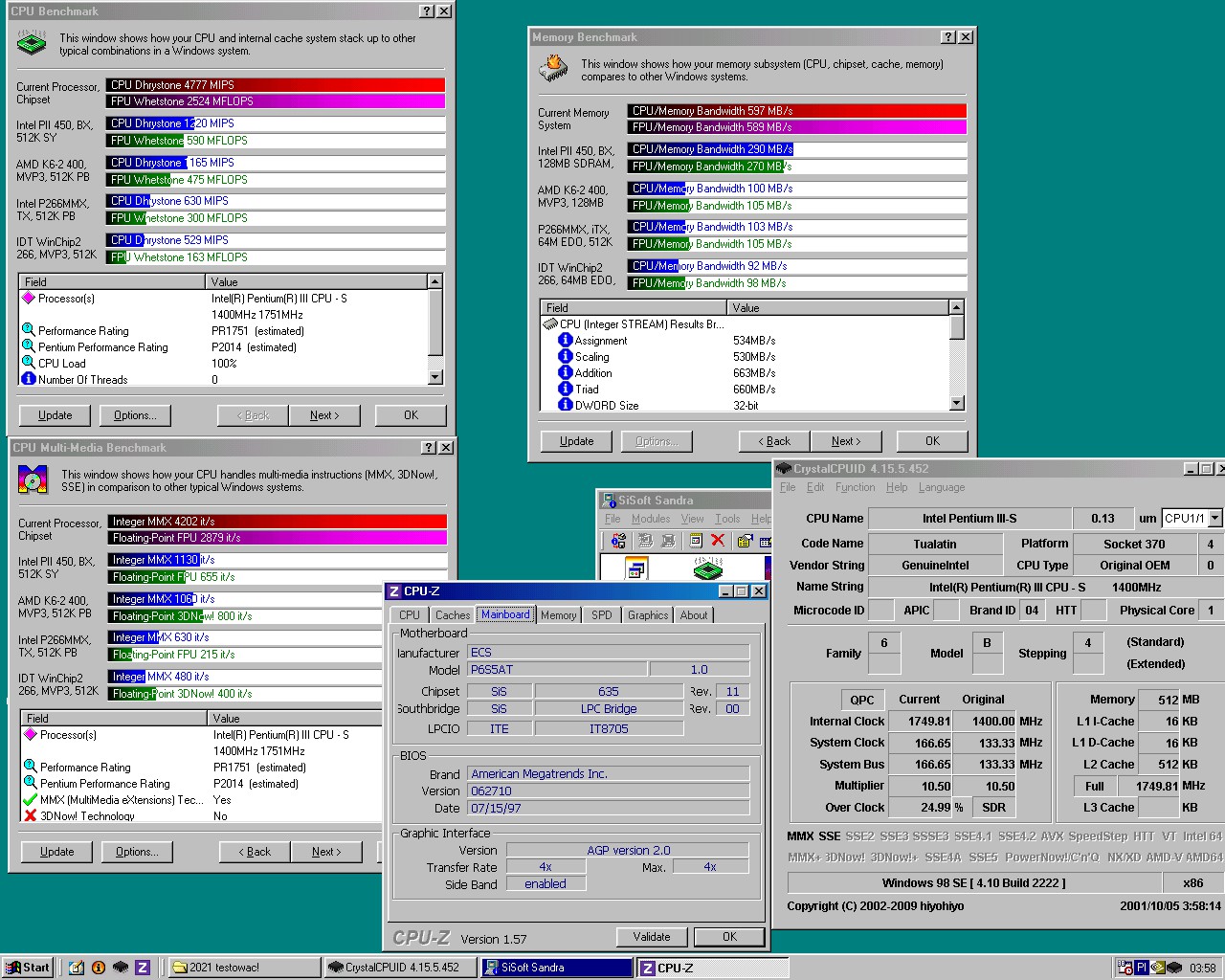
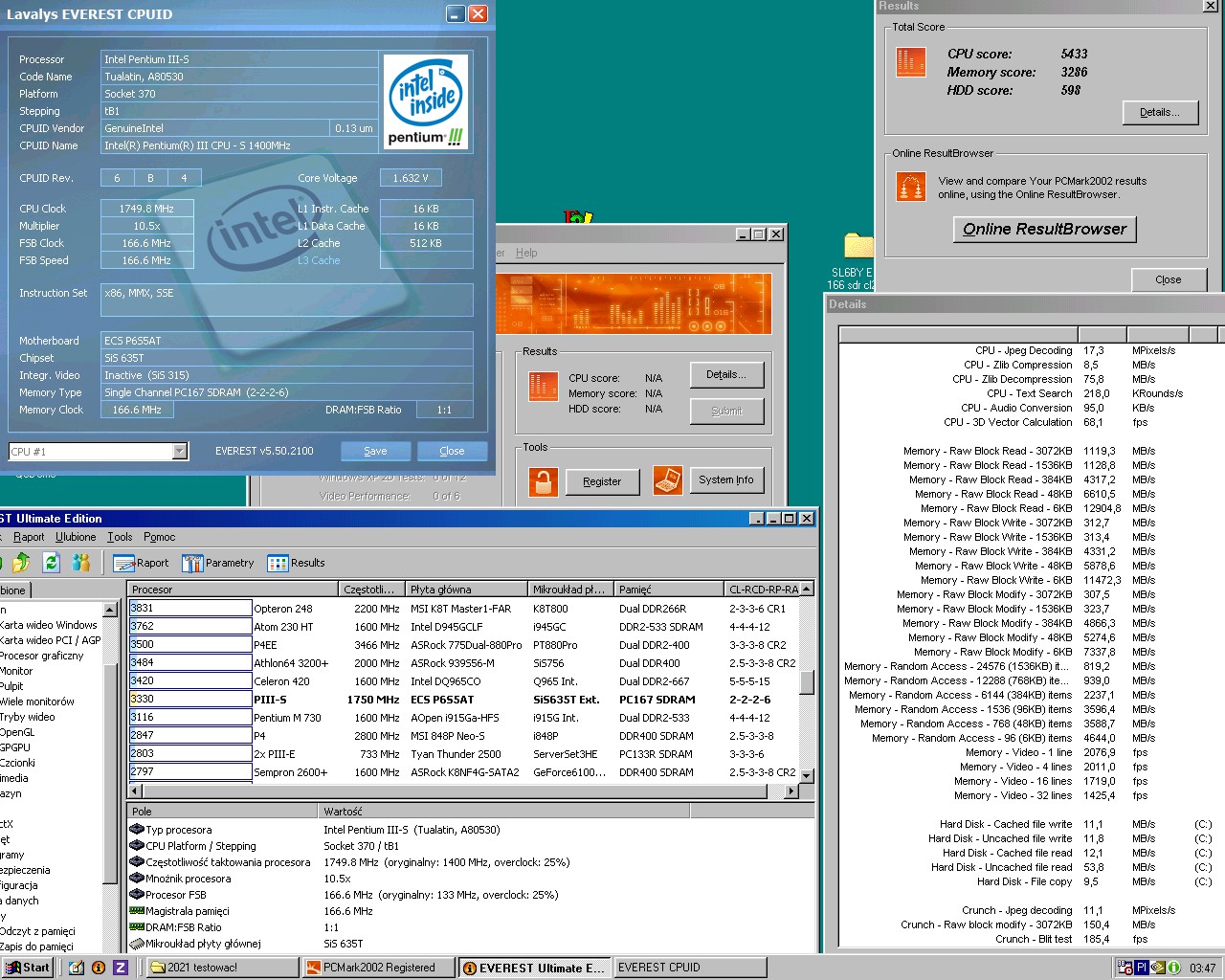
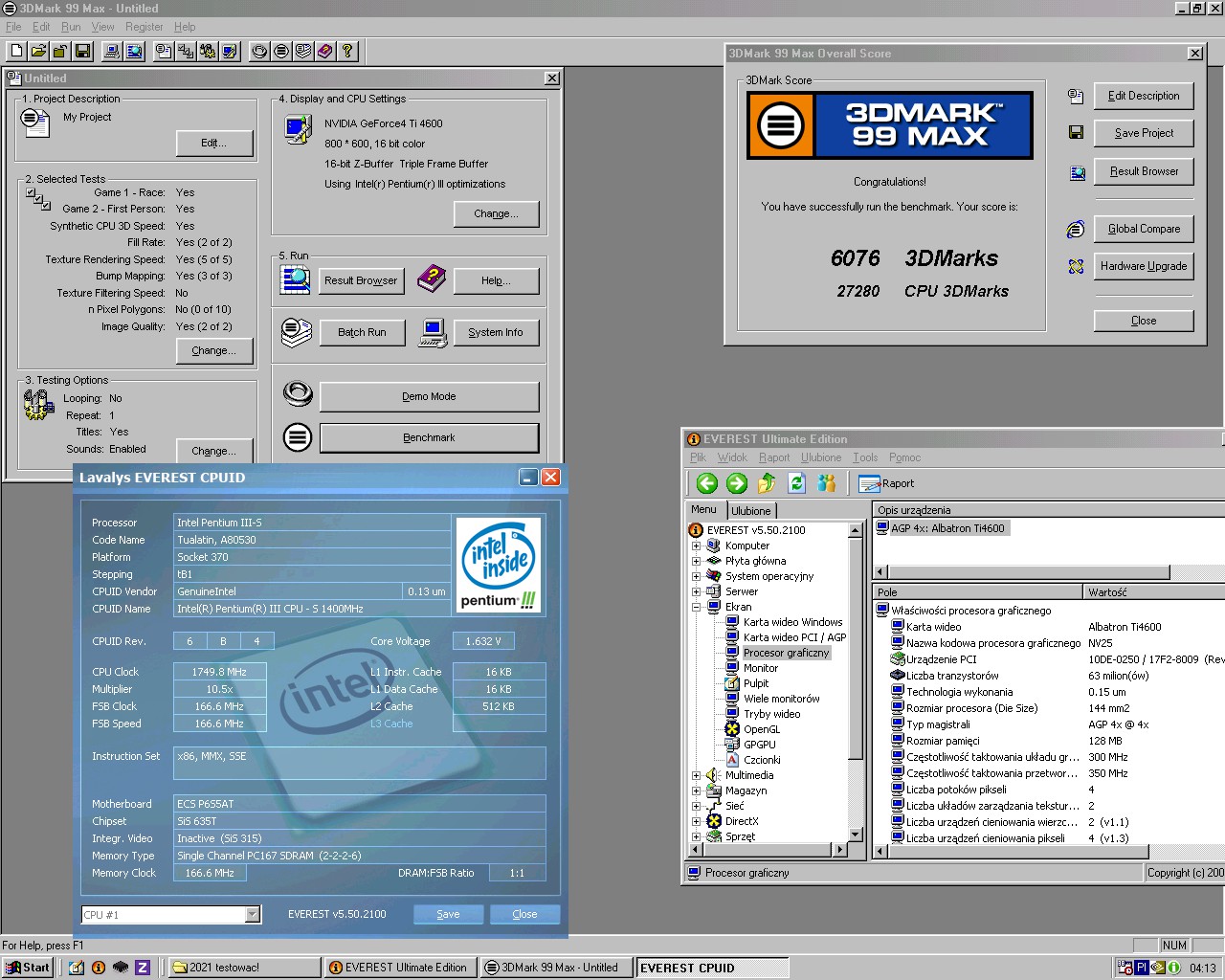
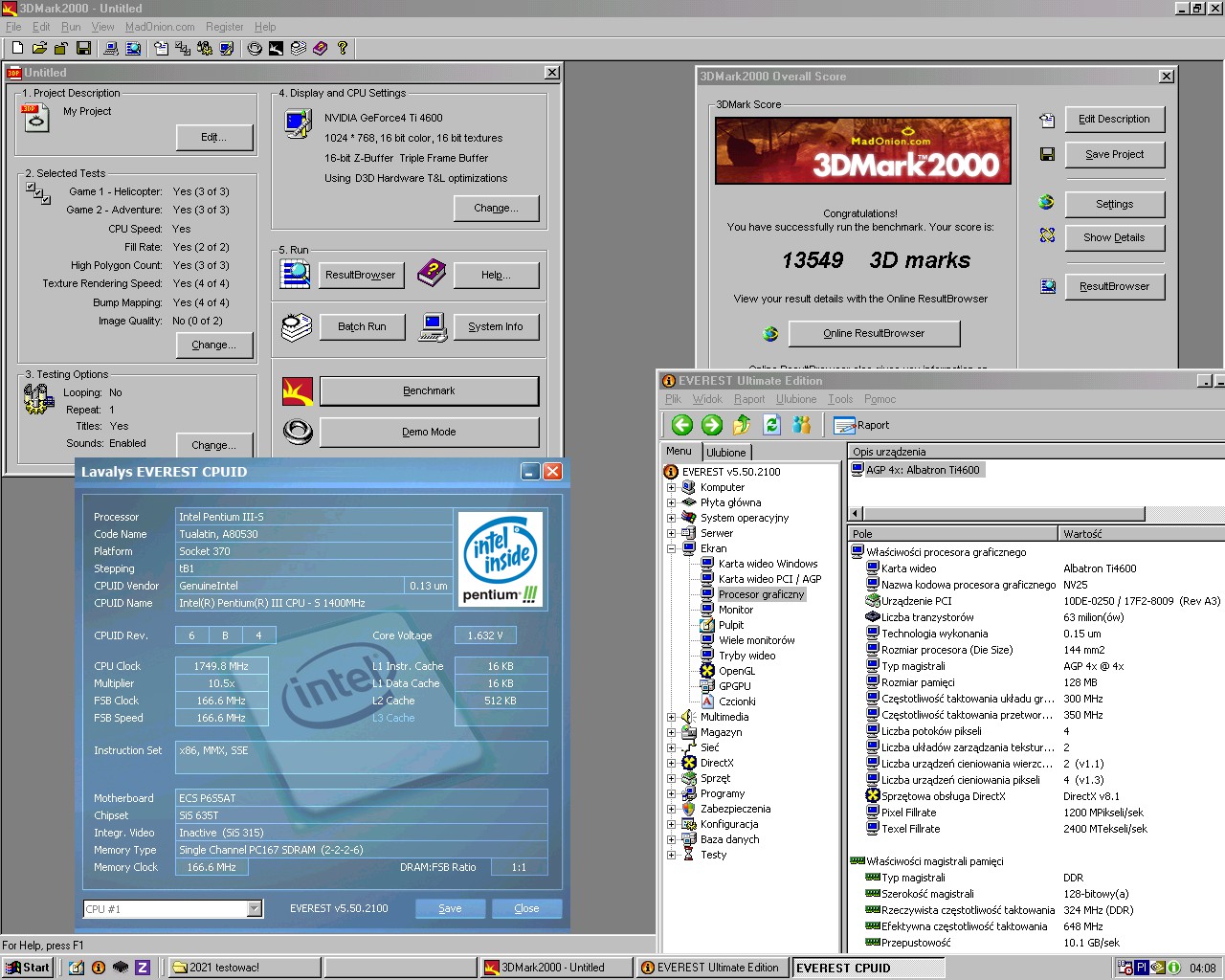
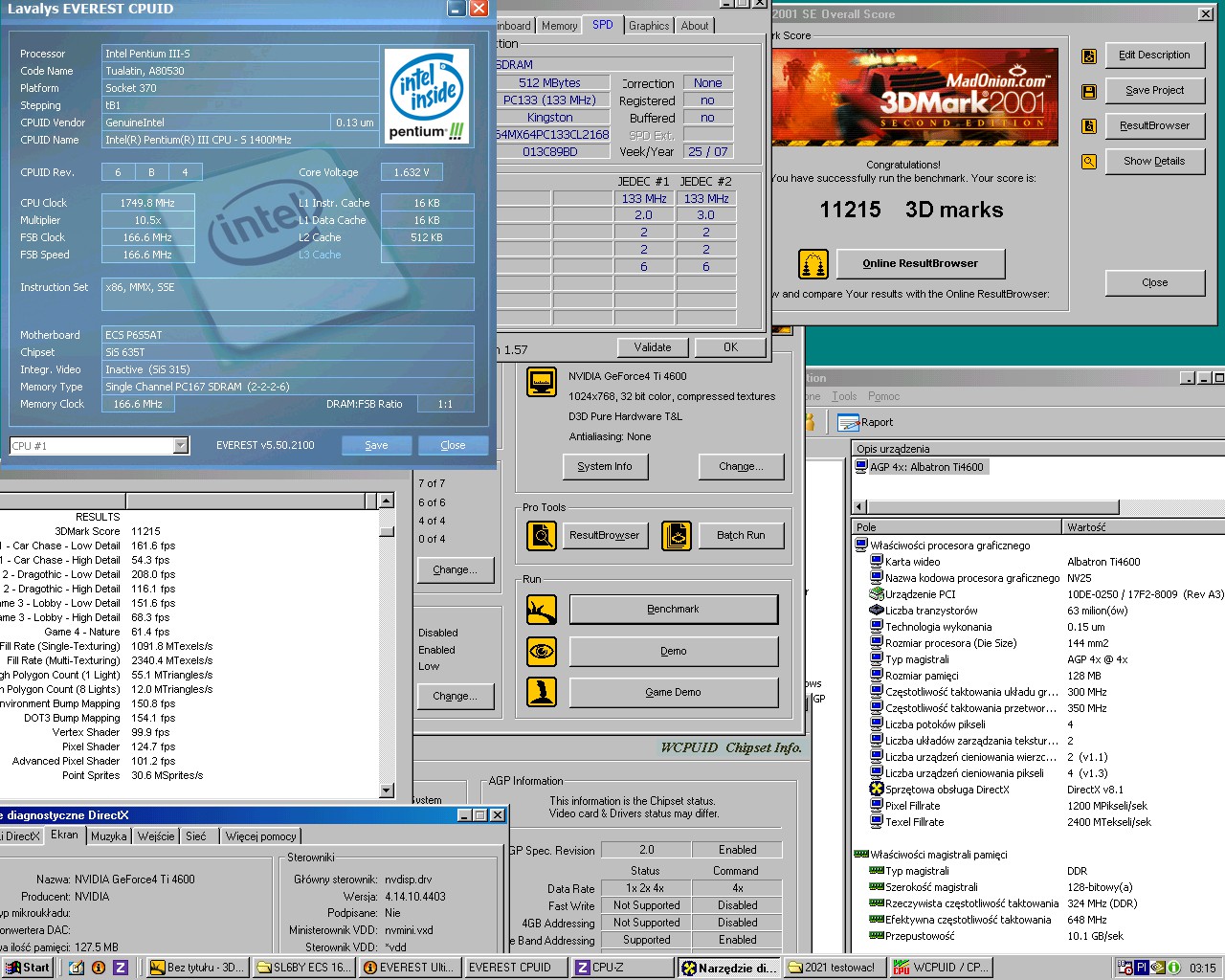
3) VIA VT8633
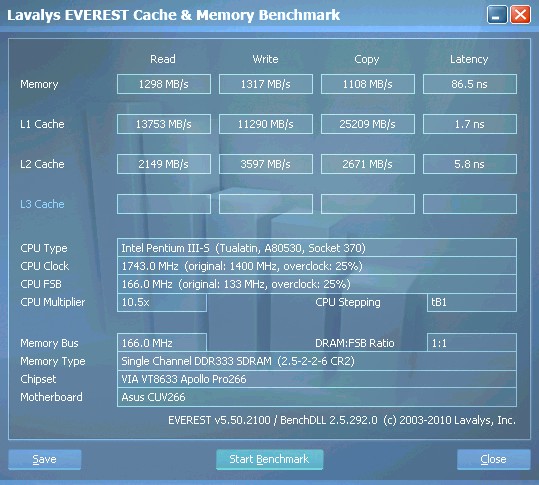
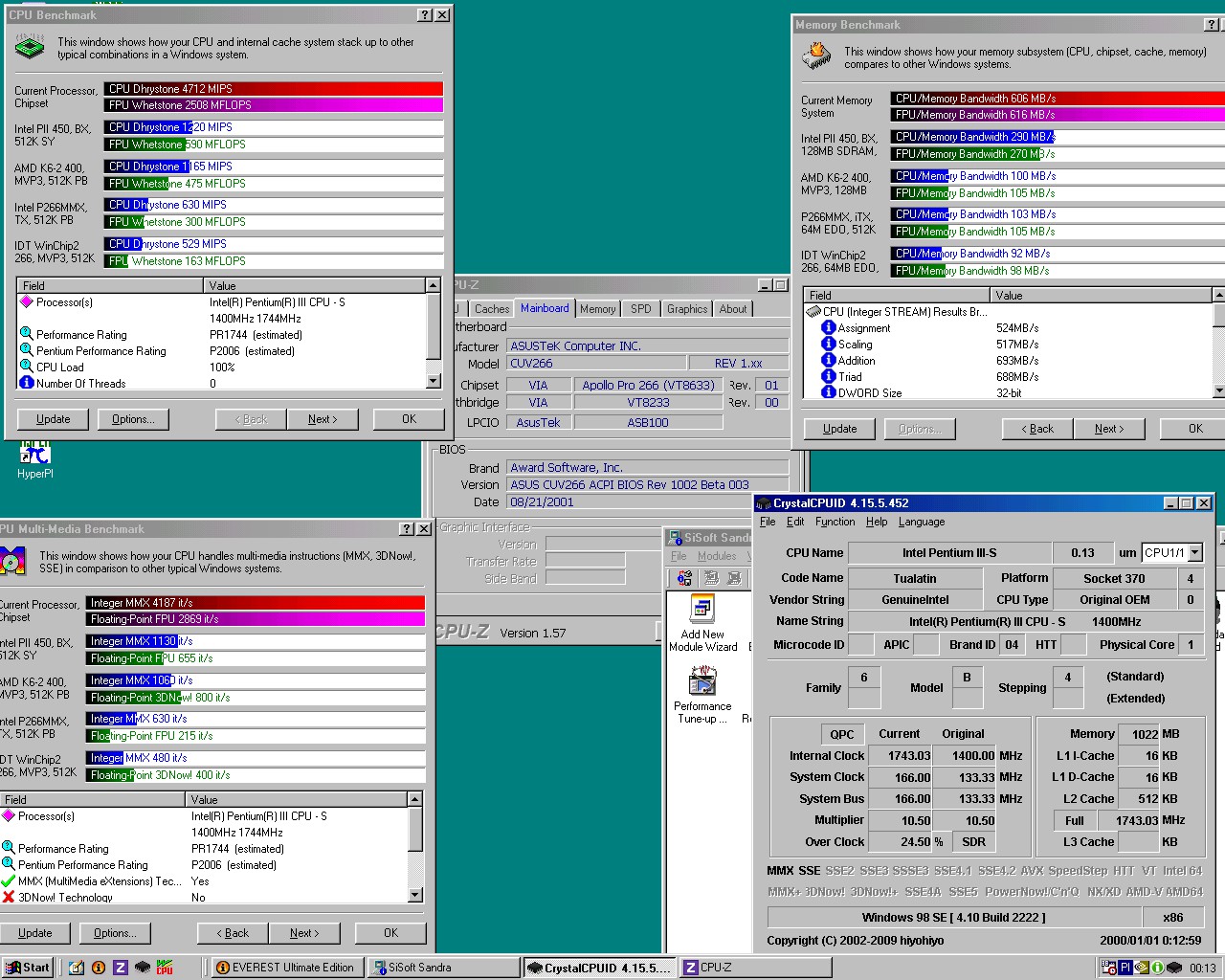
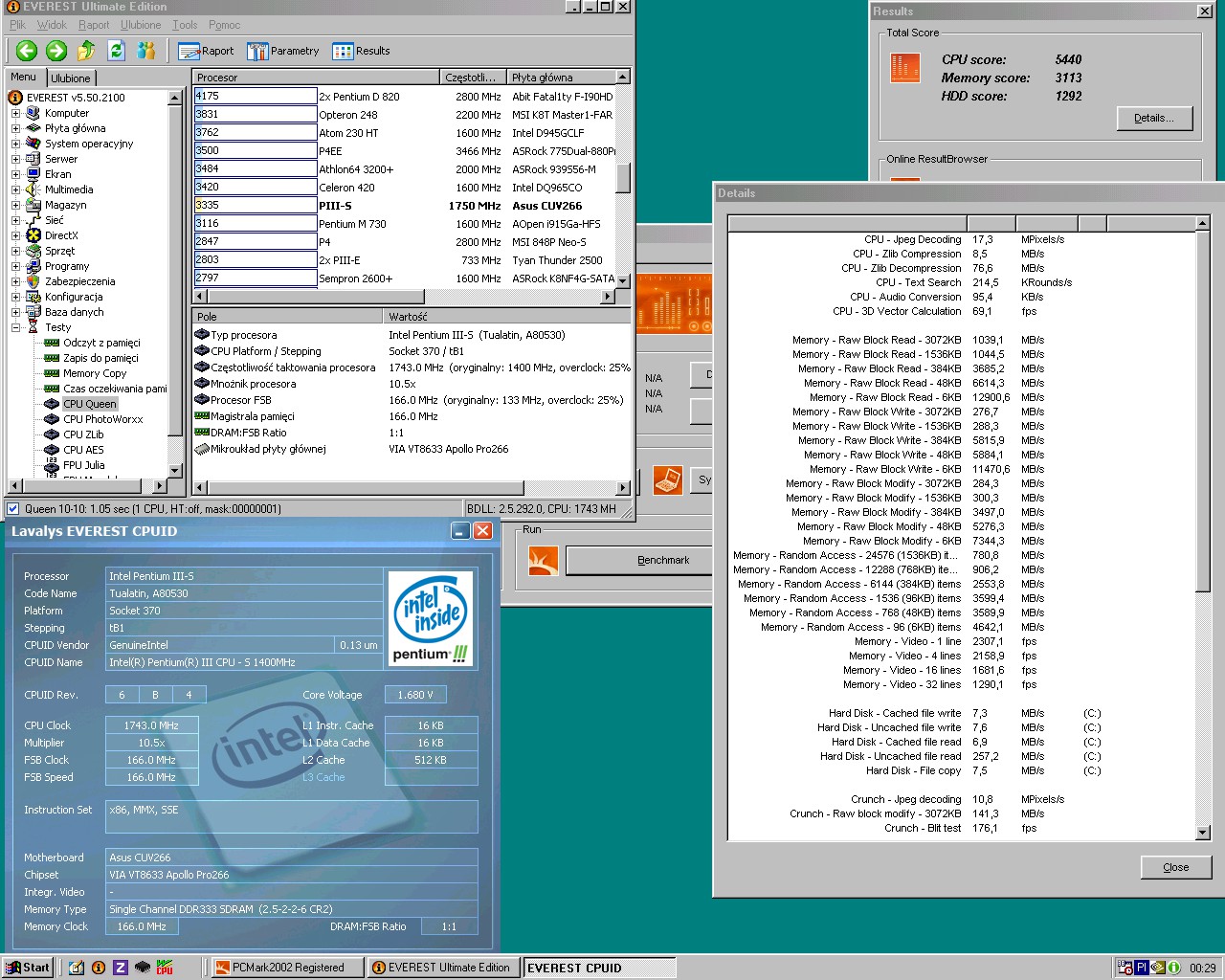
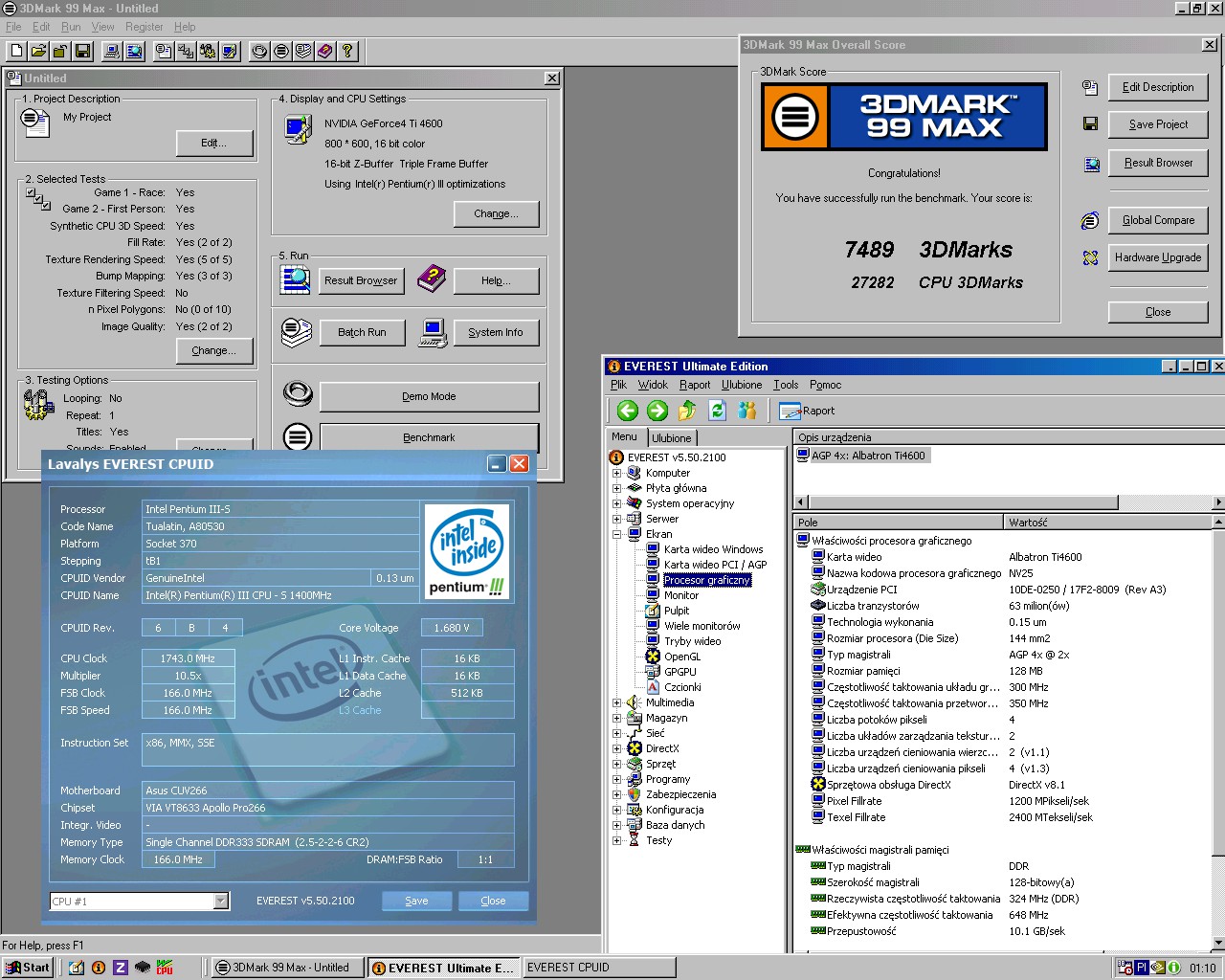
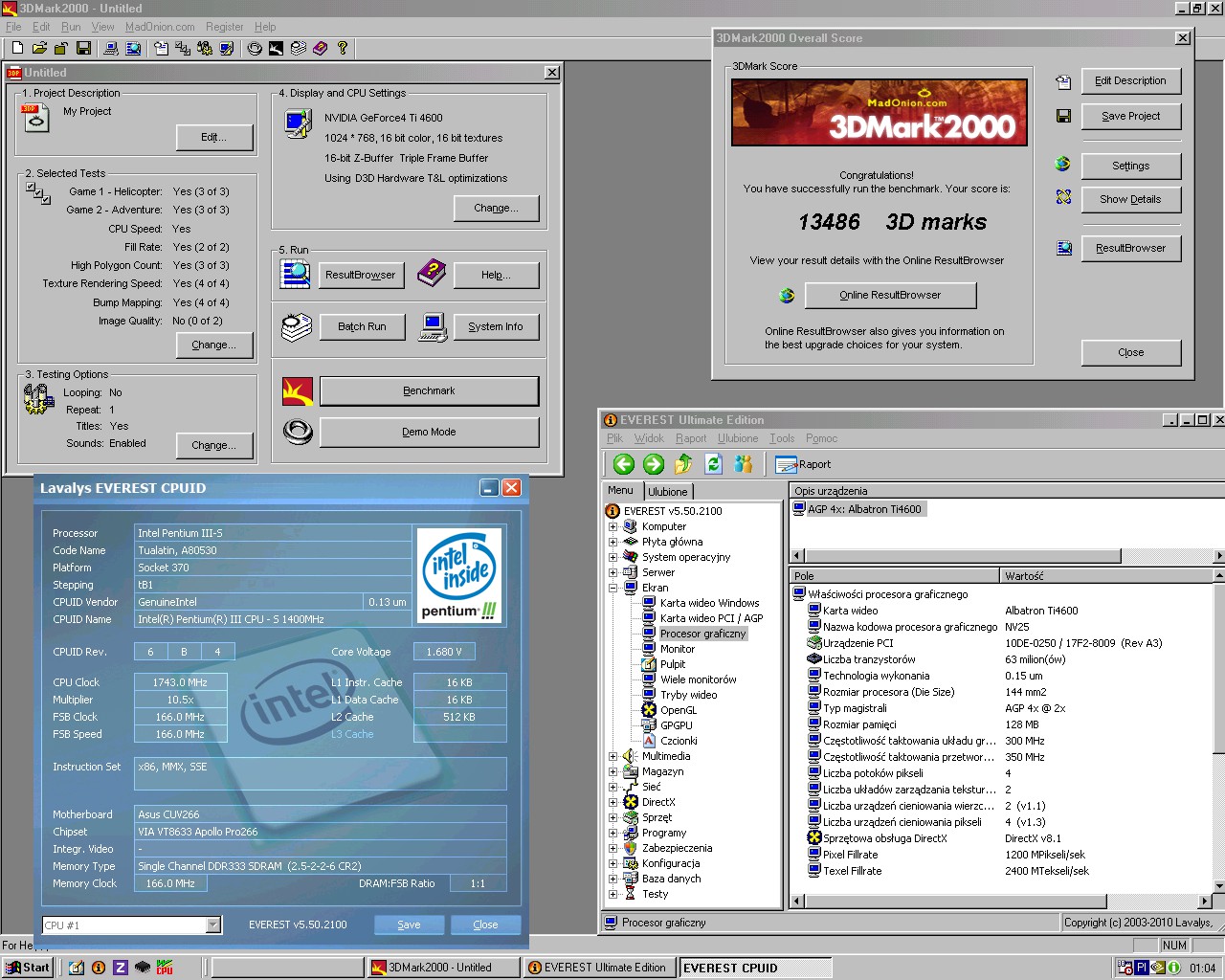
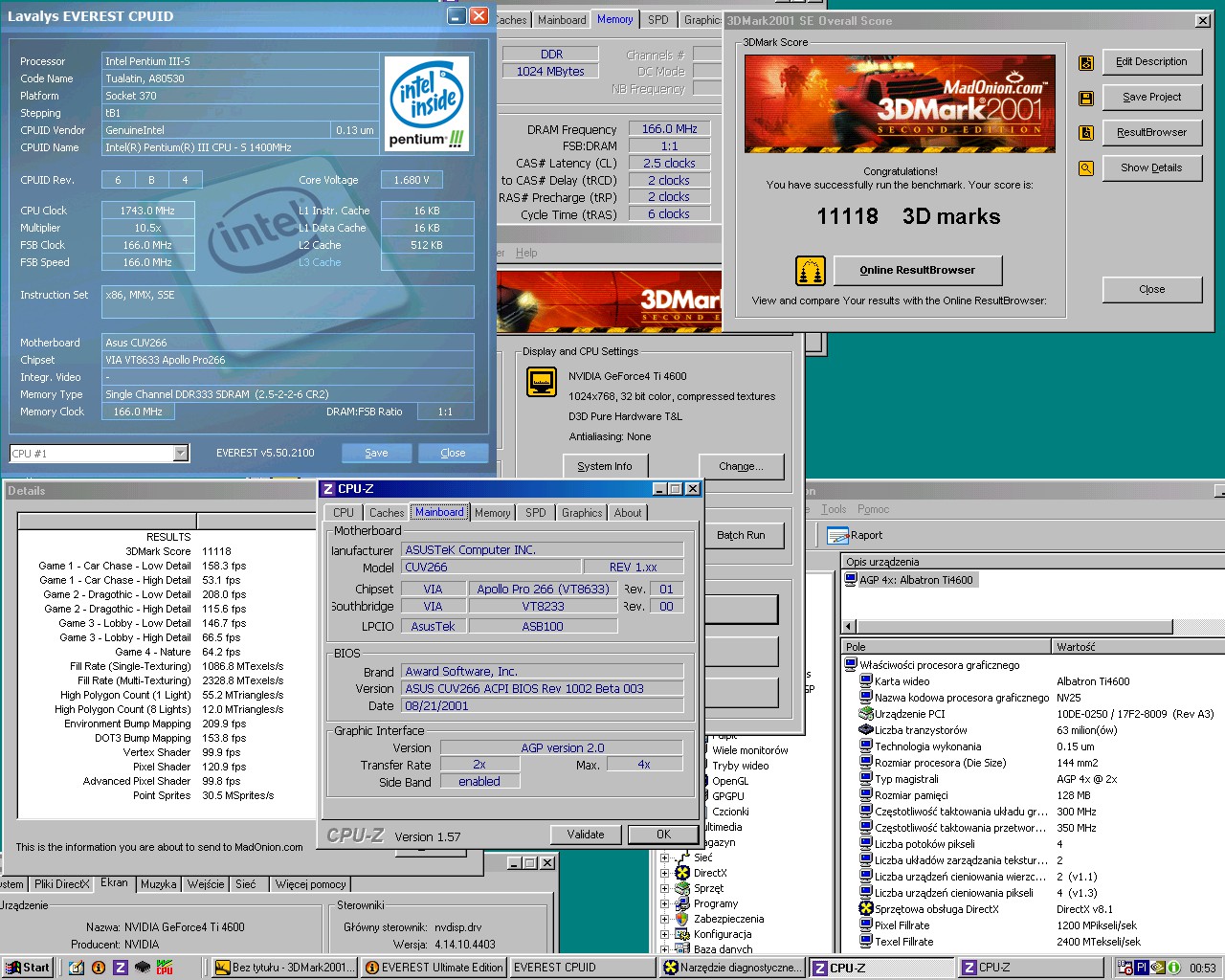
2) Intel 440BX
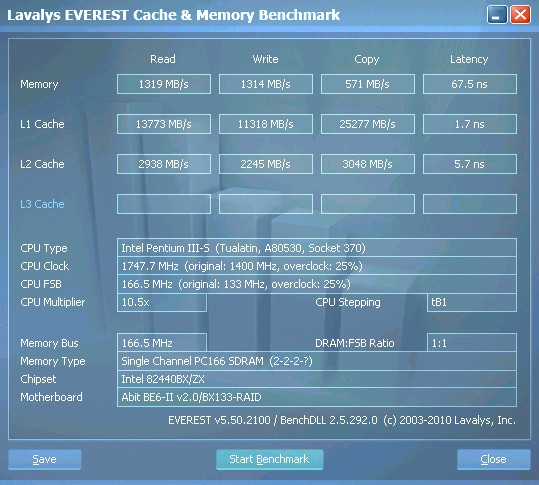
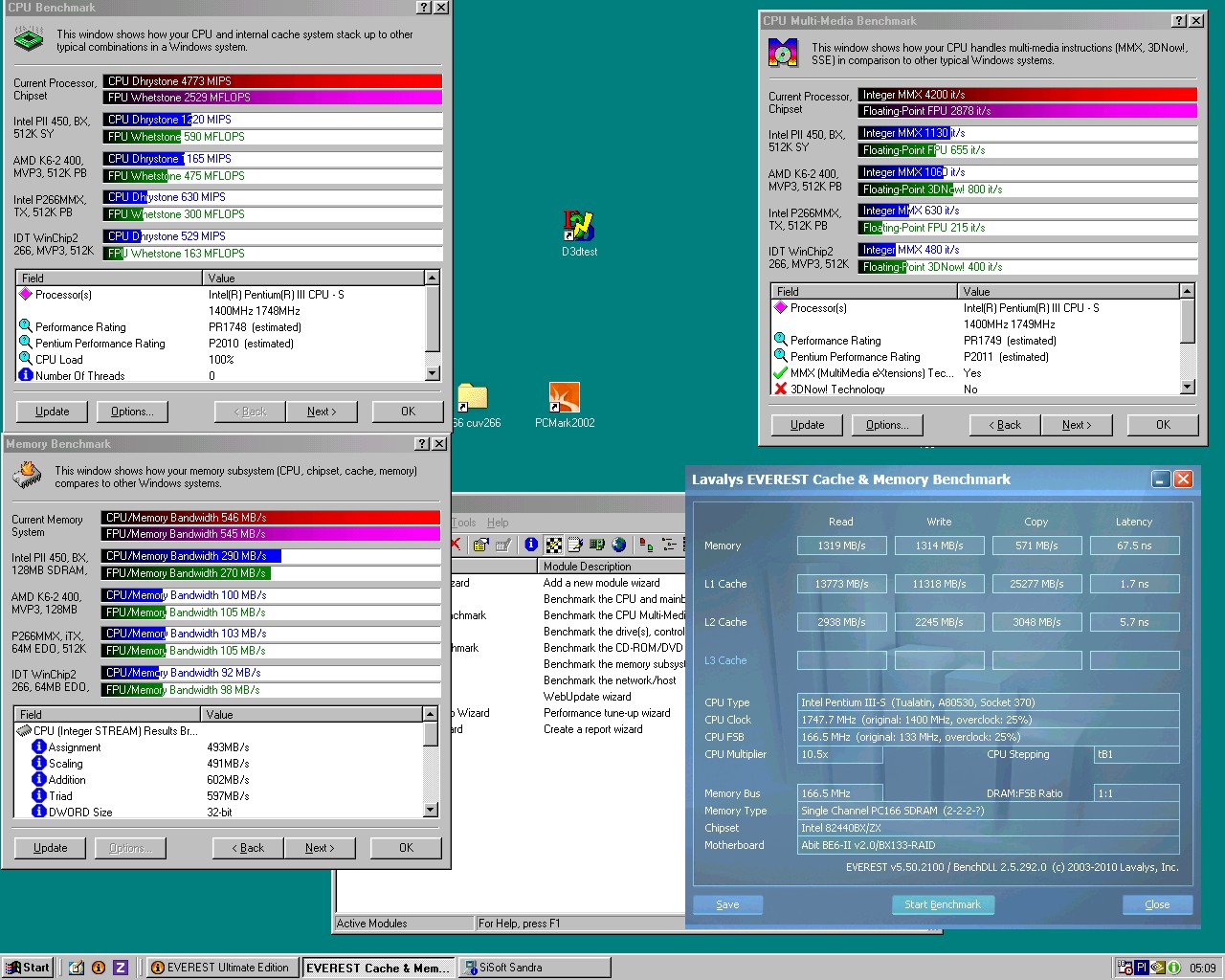
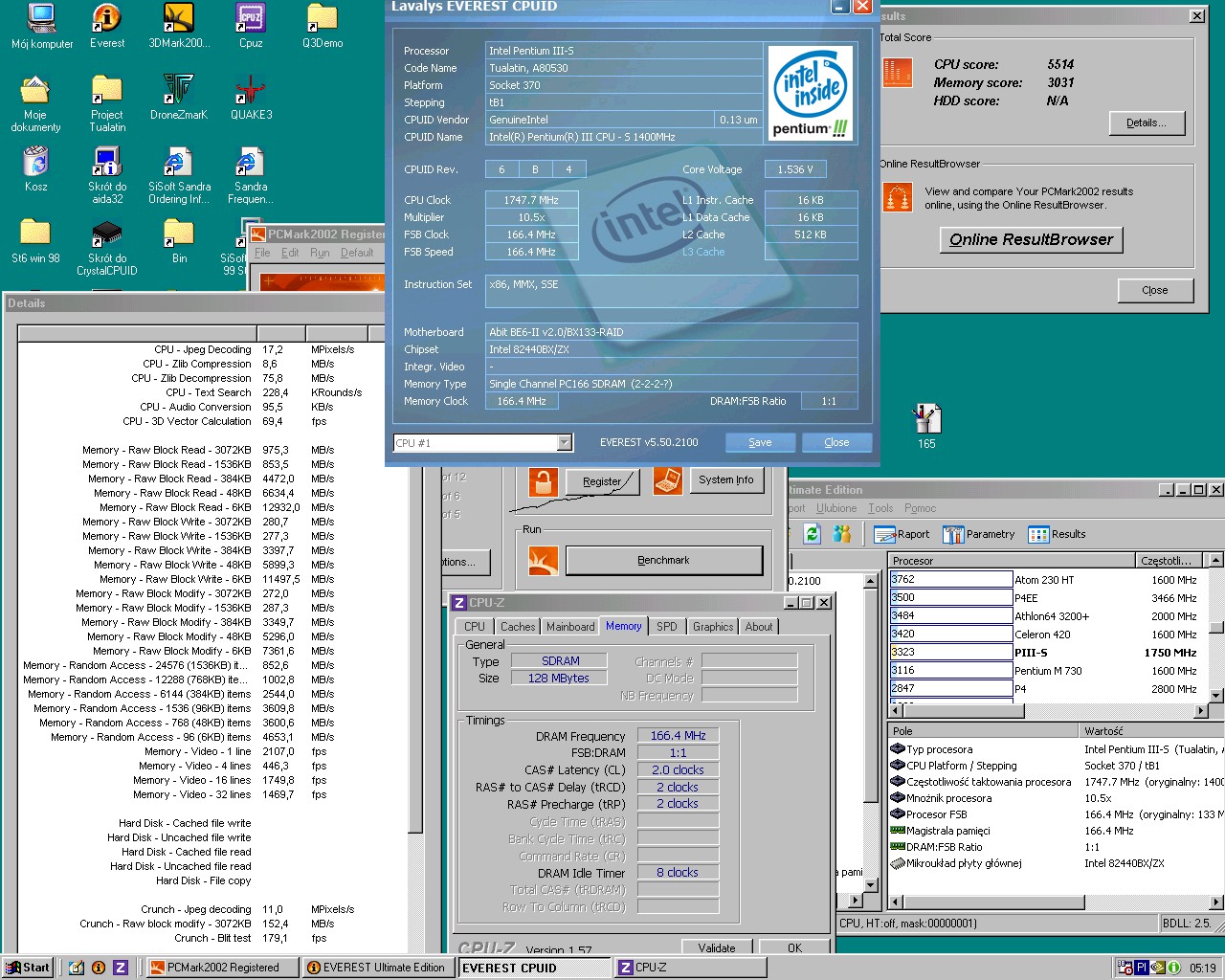
1) SiS 635T DDR
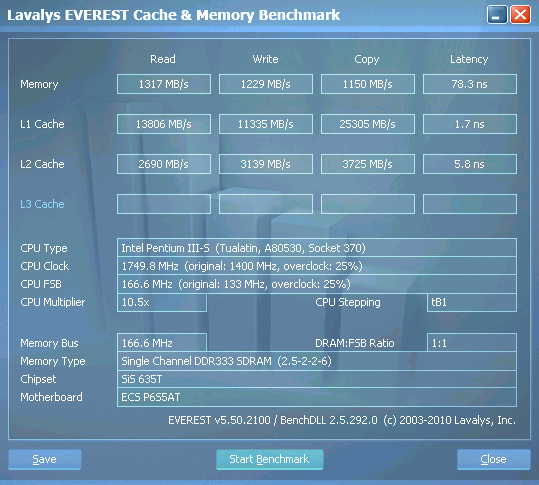
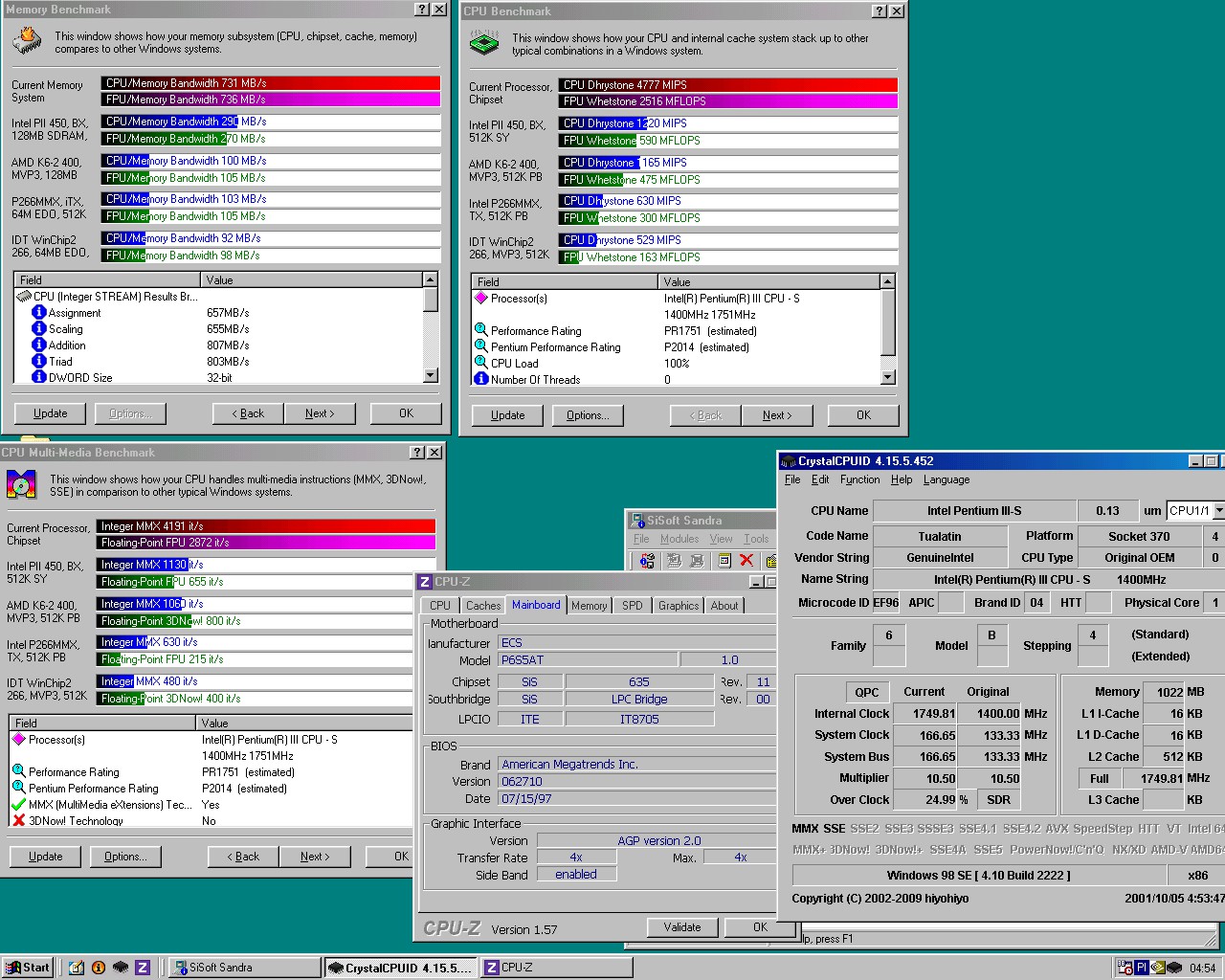
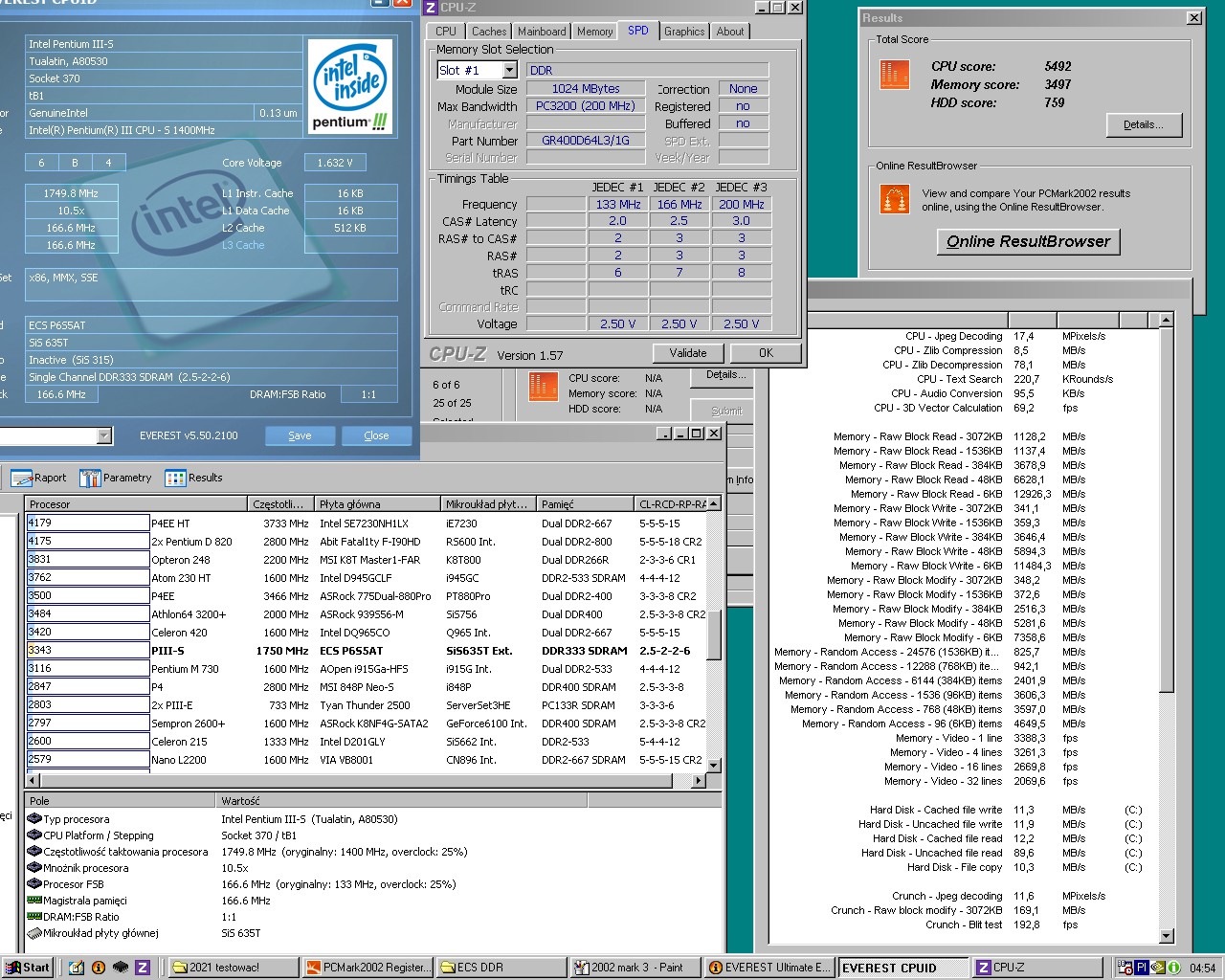
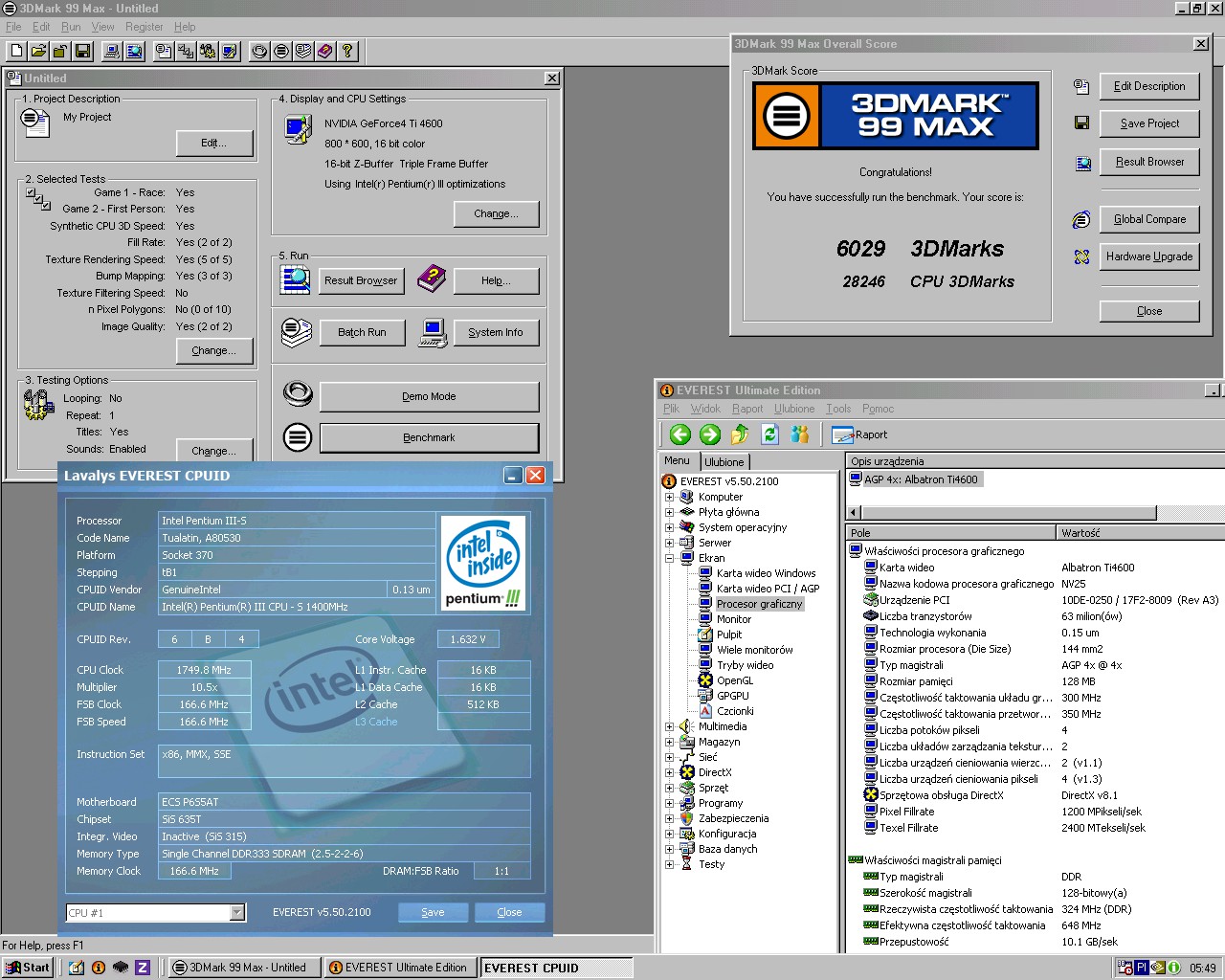
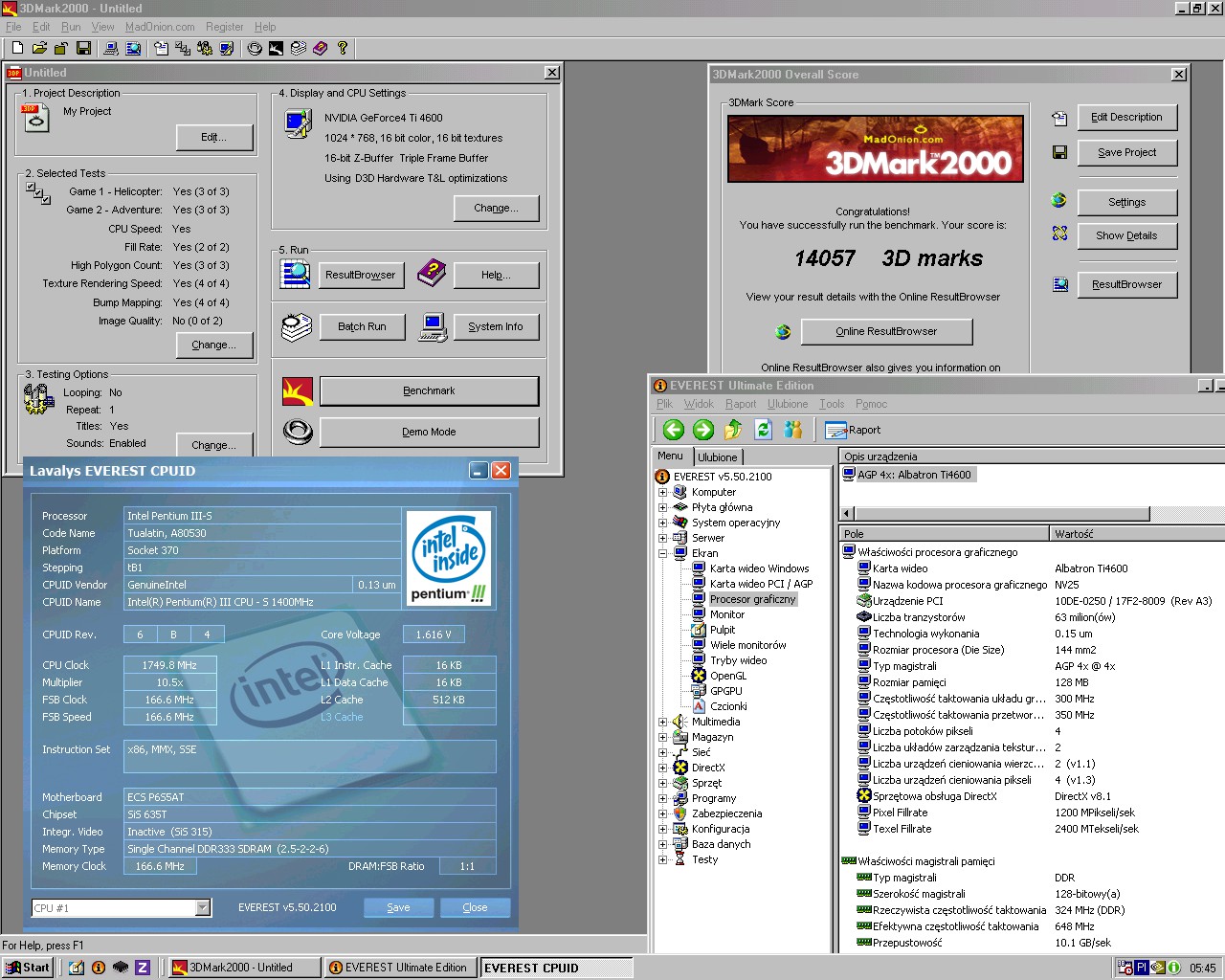
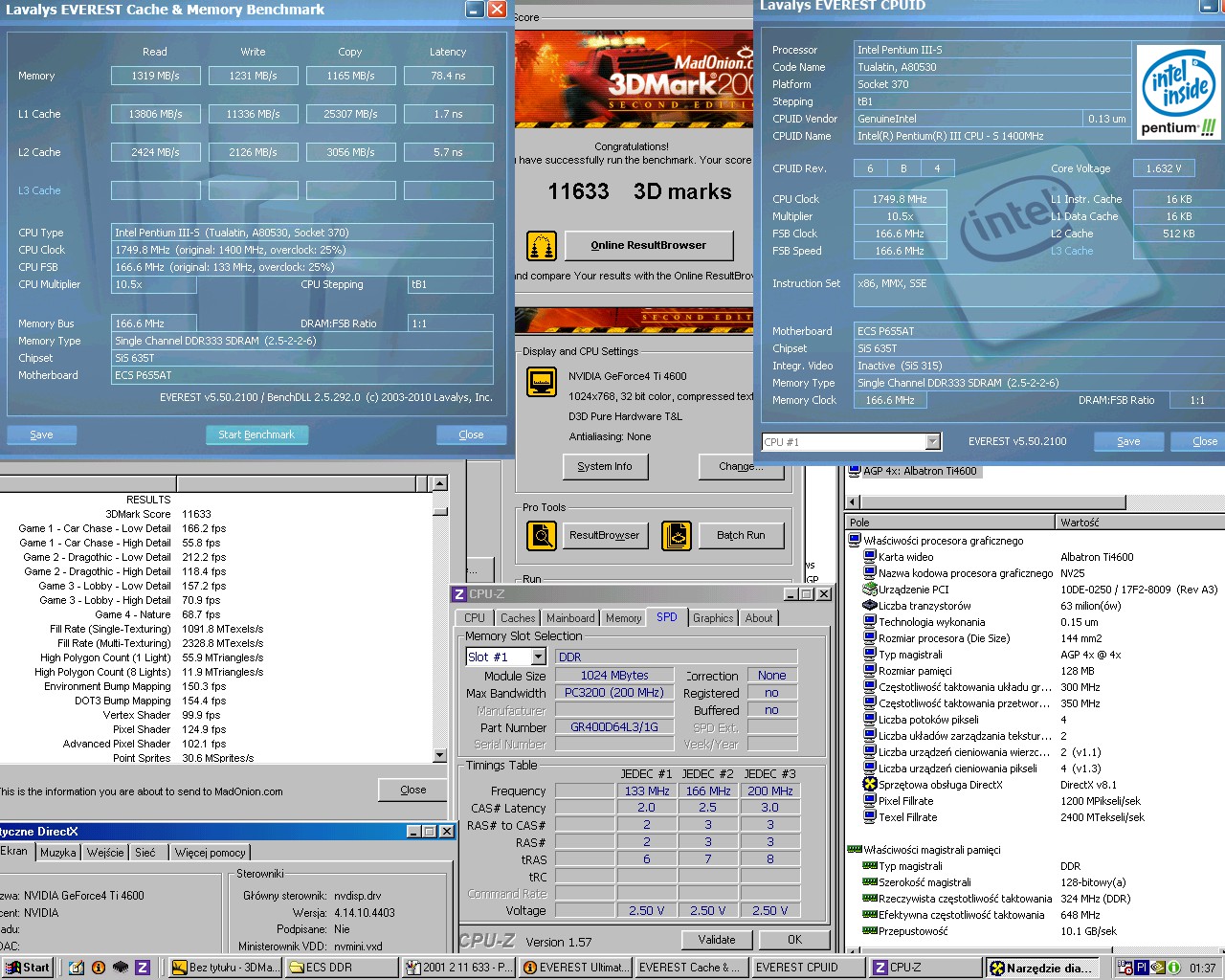
Here we can see the comarison results:
EVEREST:
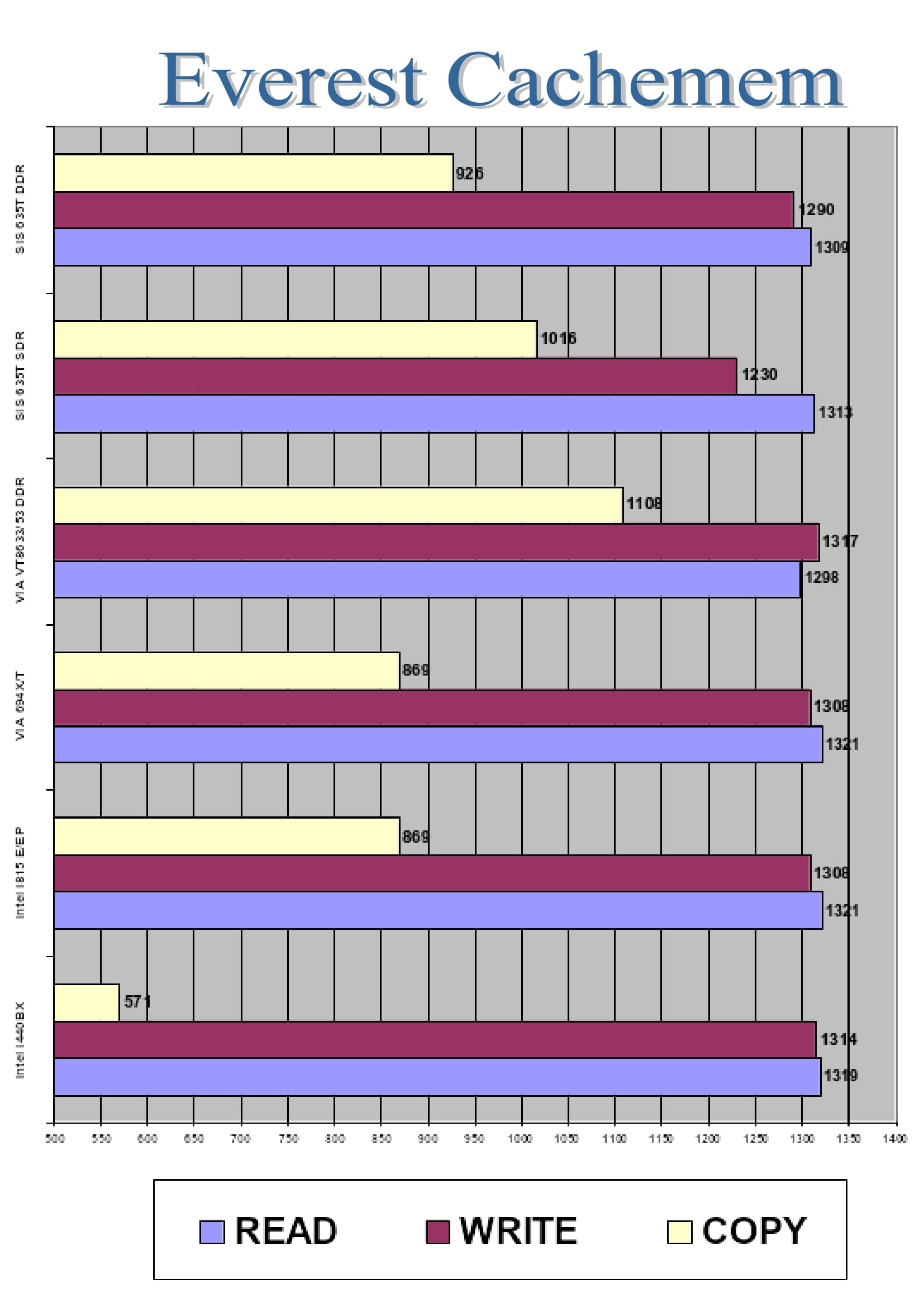
It’s hard to say who the winner is in this competition 😉 VIA DDR seems to have 2 best scores out of 3 tests.
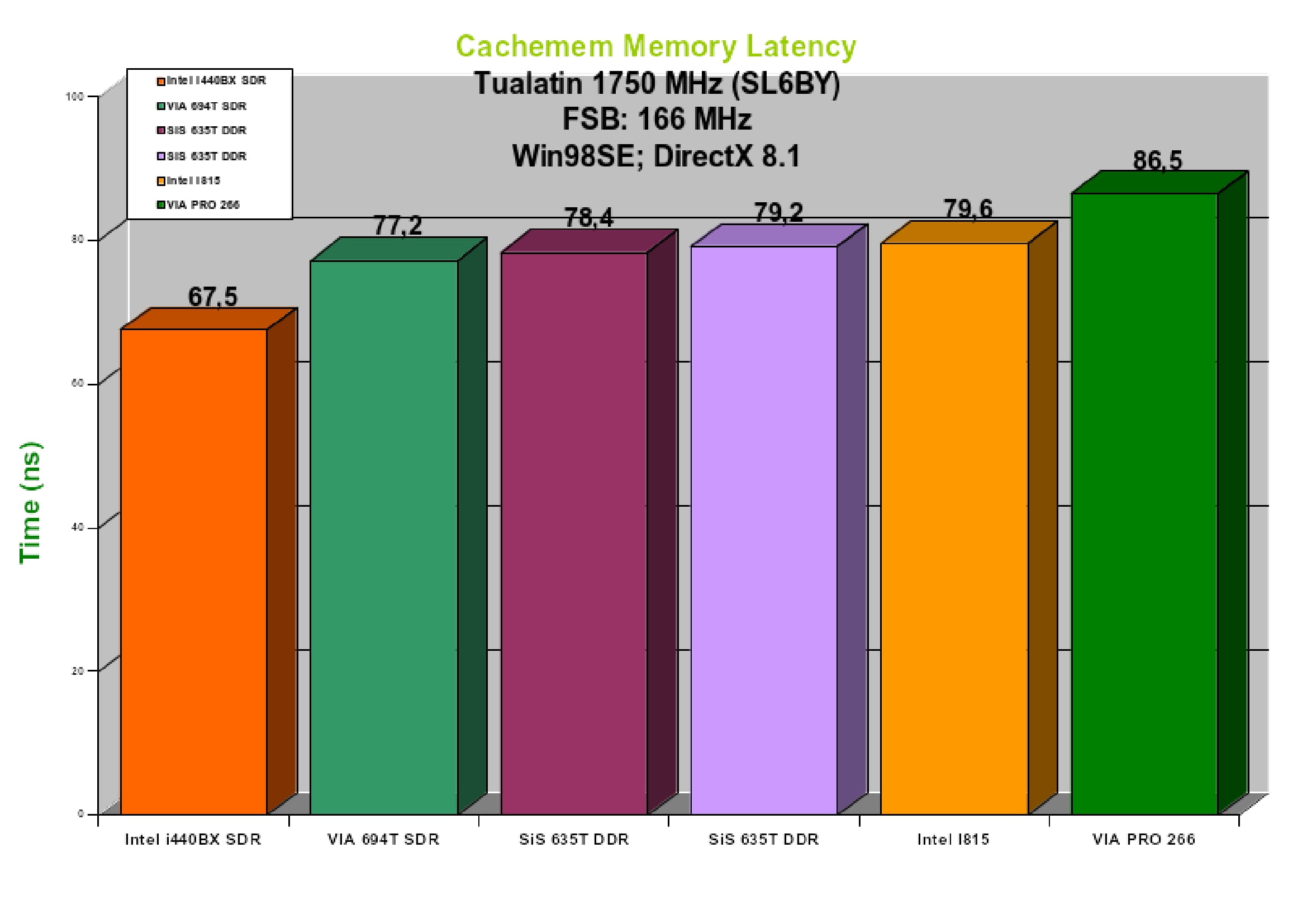
We can see that the immortal Intel BX chipset has the best latancy timings 😀
SISOFT:
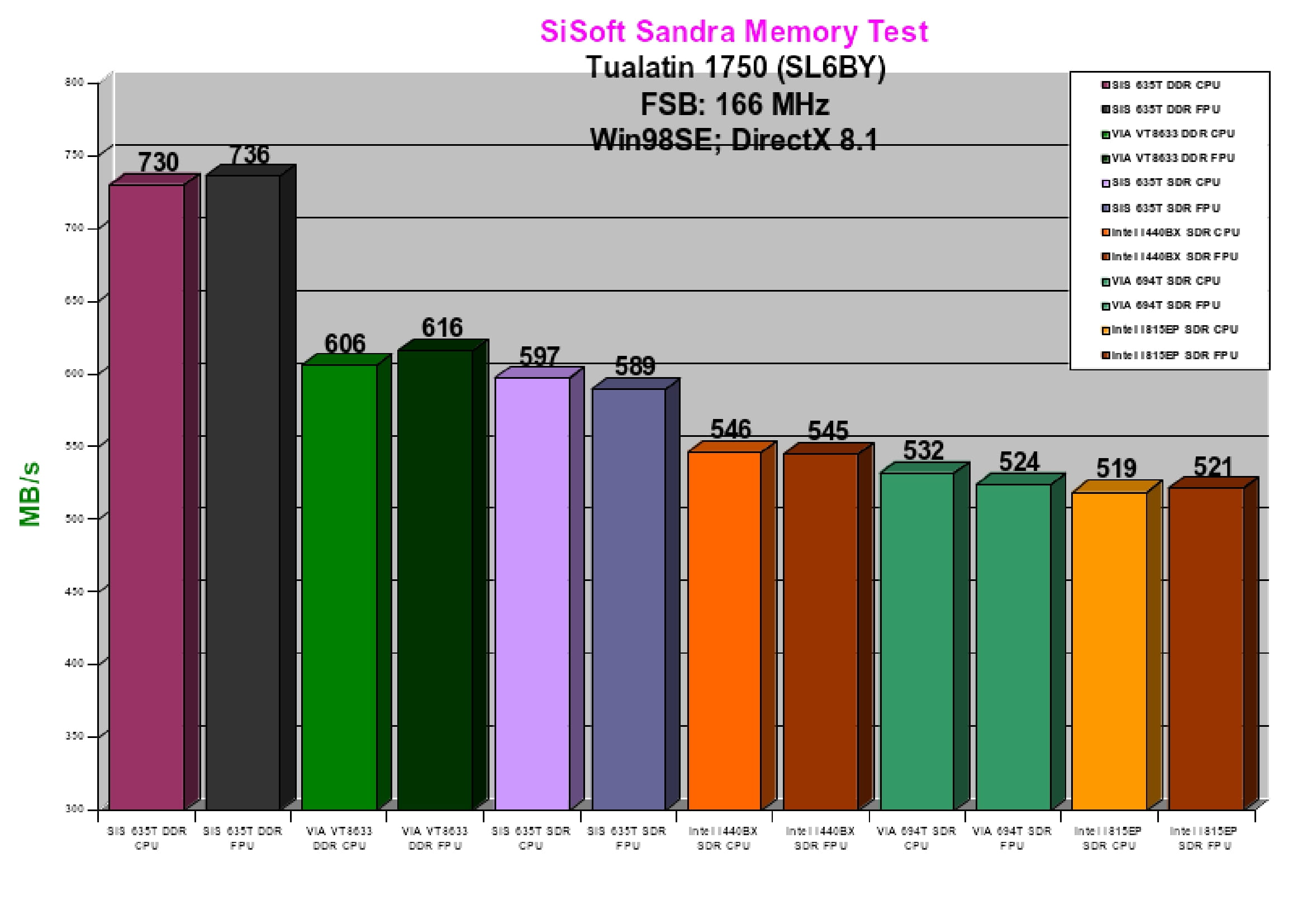
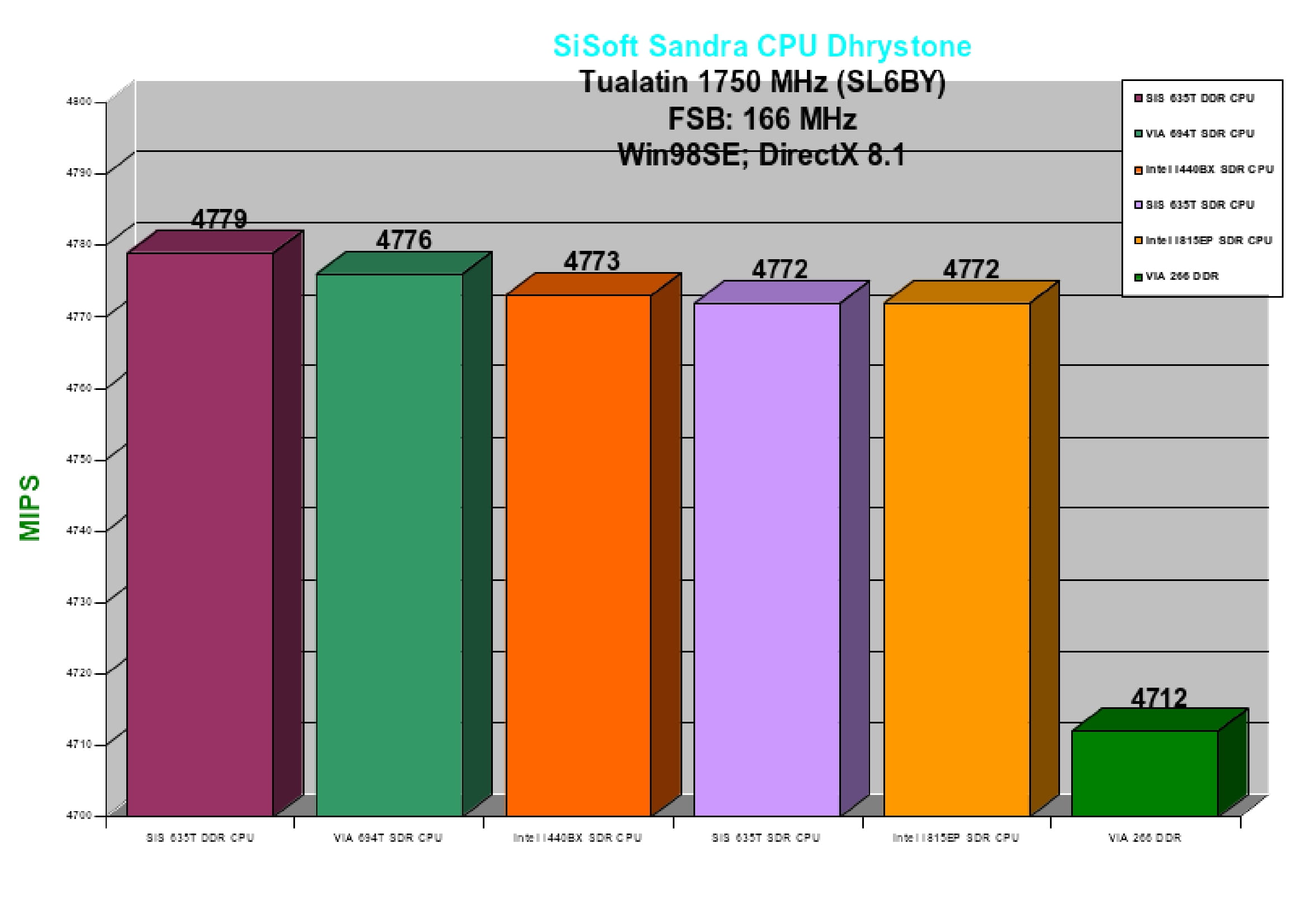
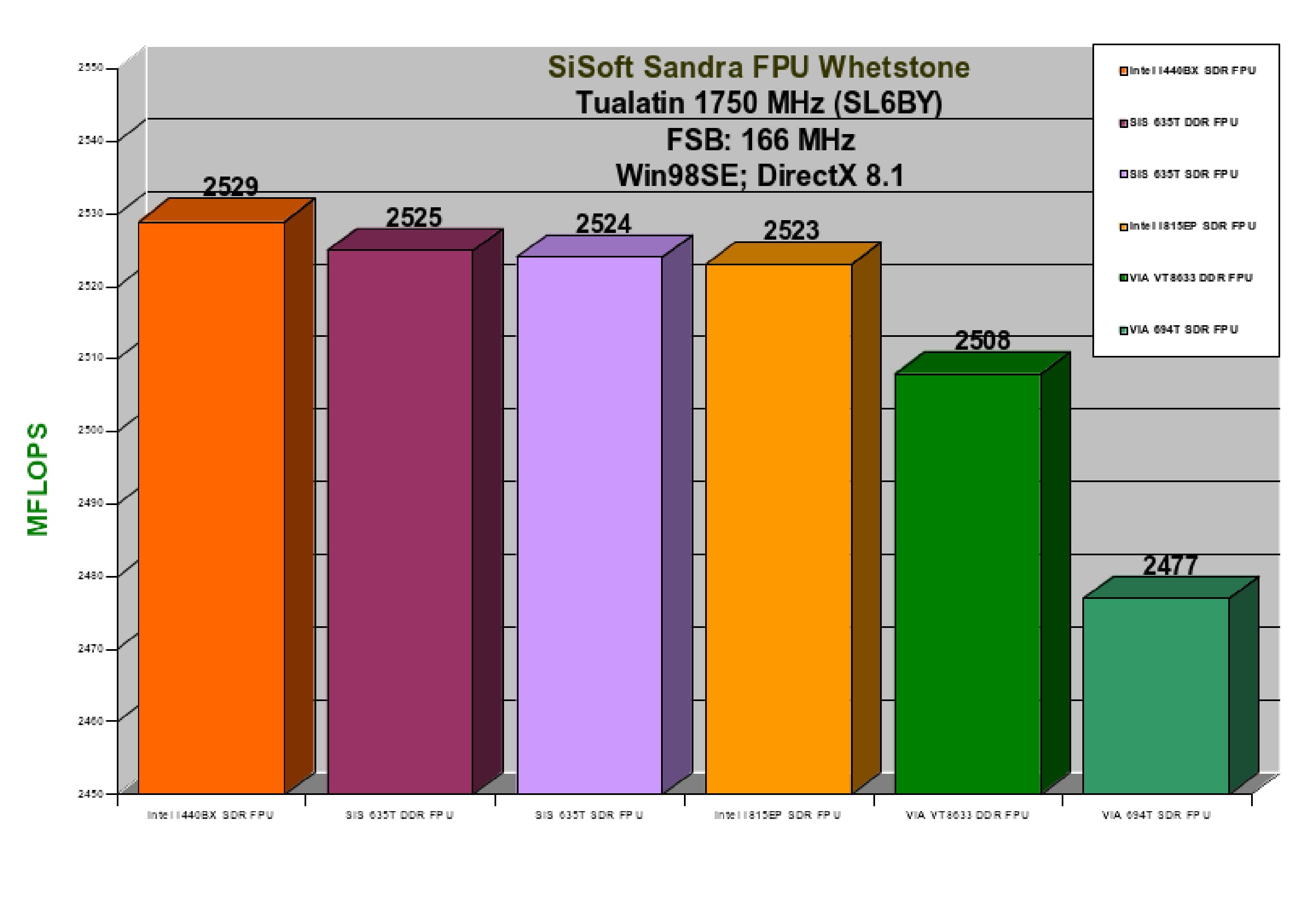
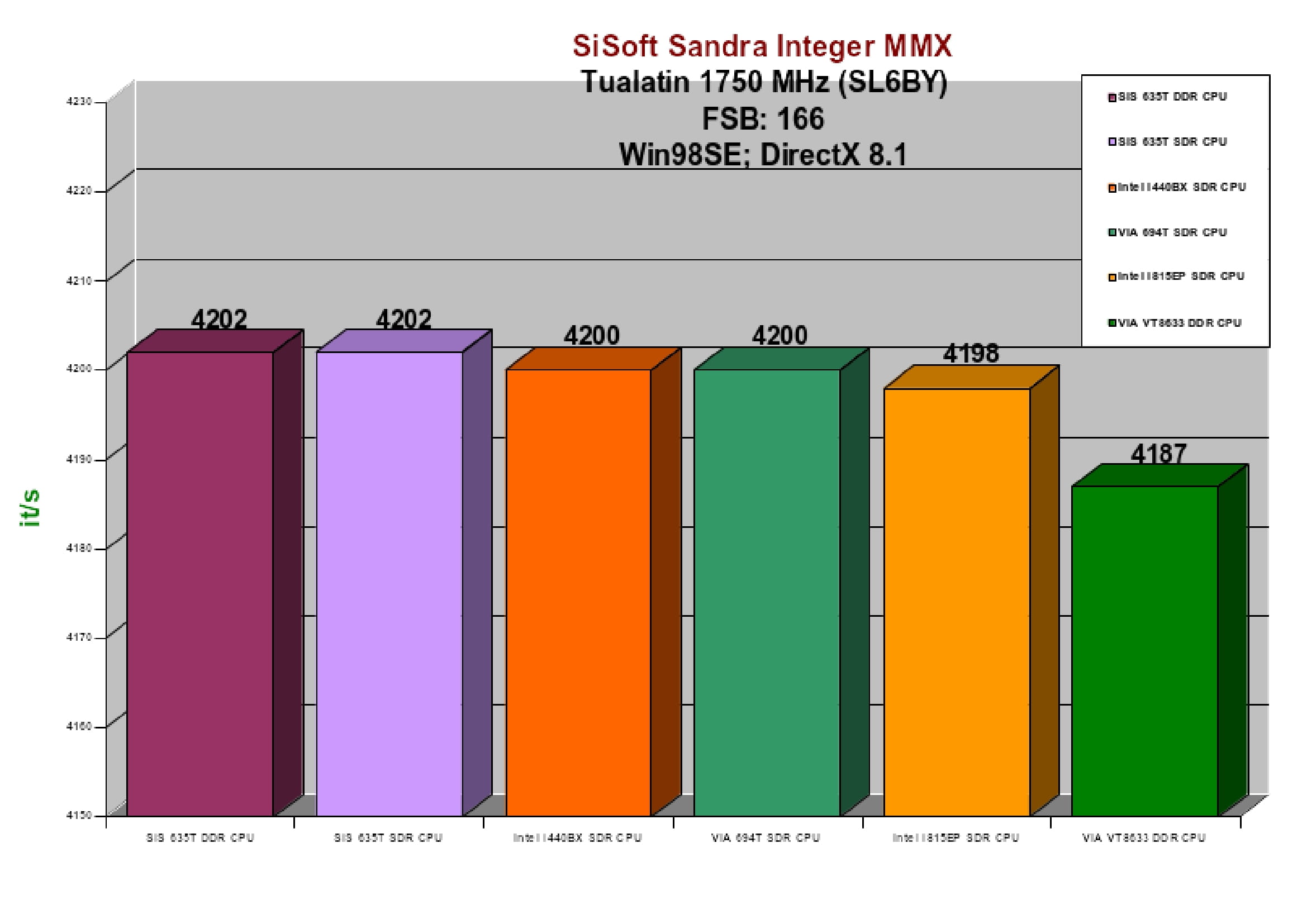
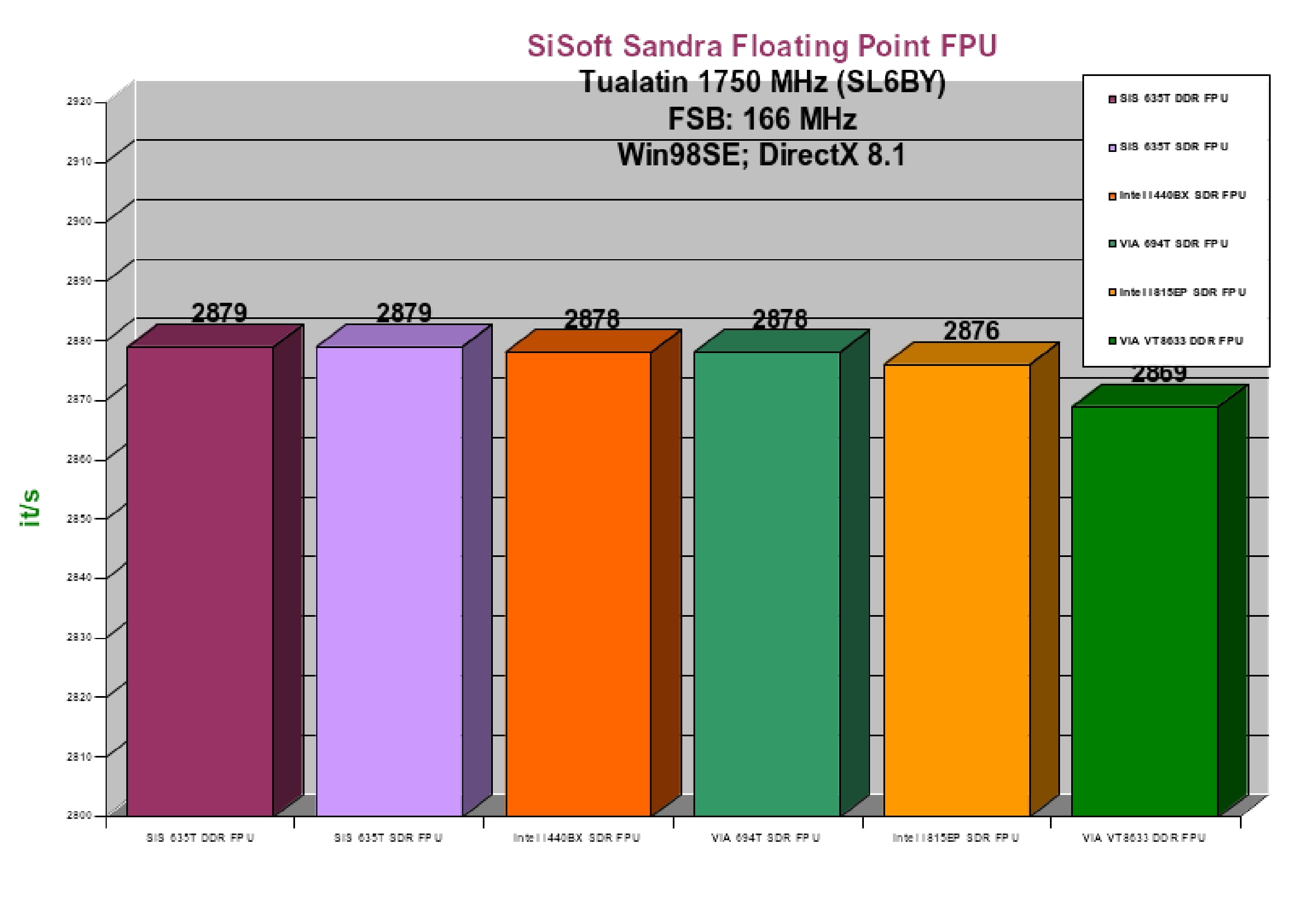
In SiSoft the winner is almost always the same – SiS 635T with DDR, just take a look at those memory tests 😁
3D MARKS:
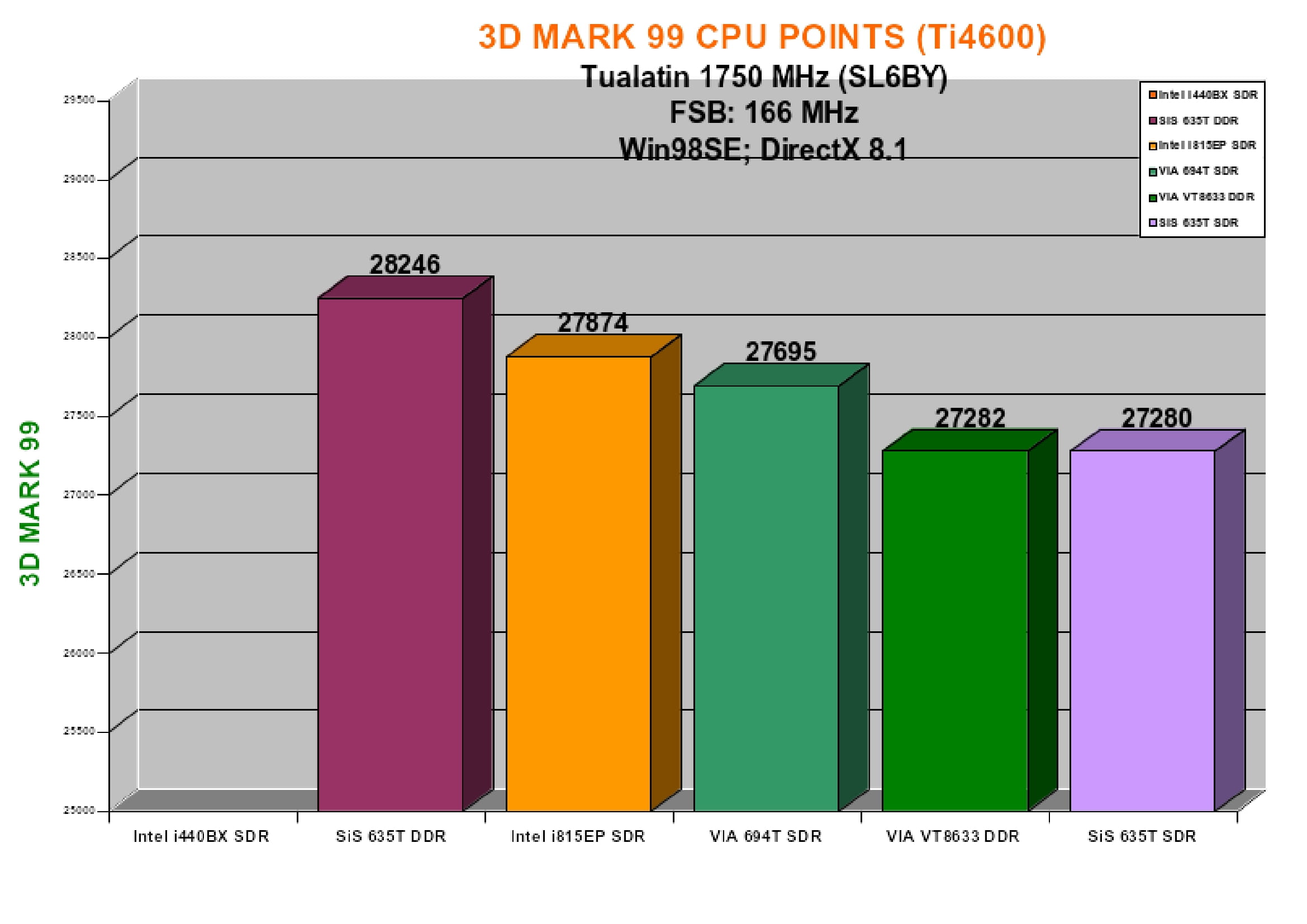
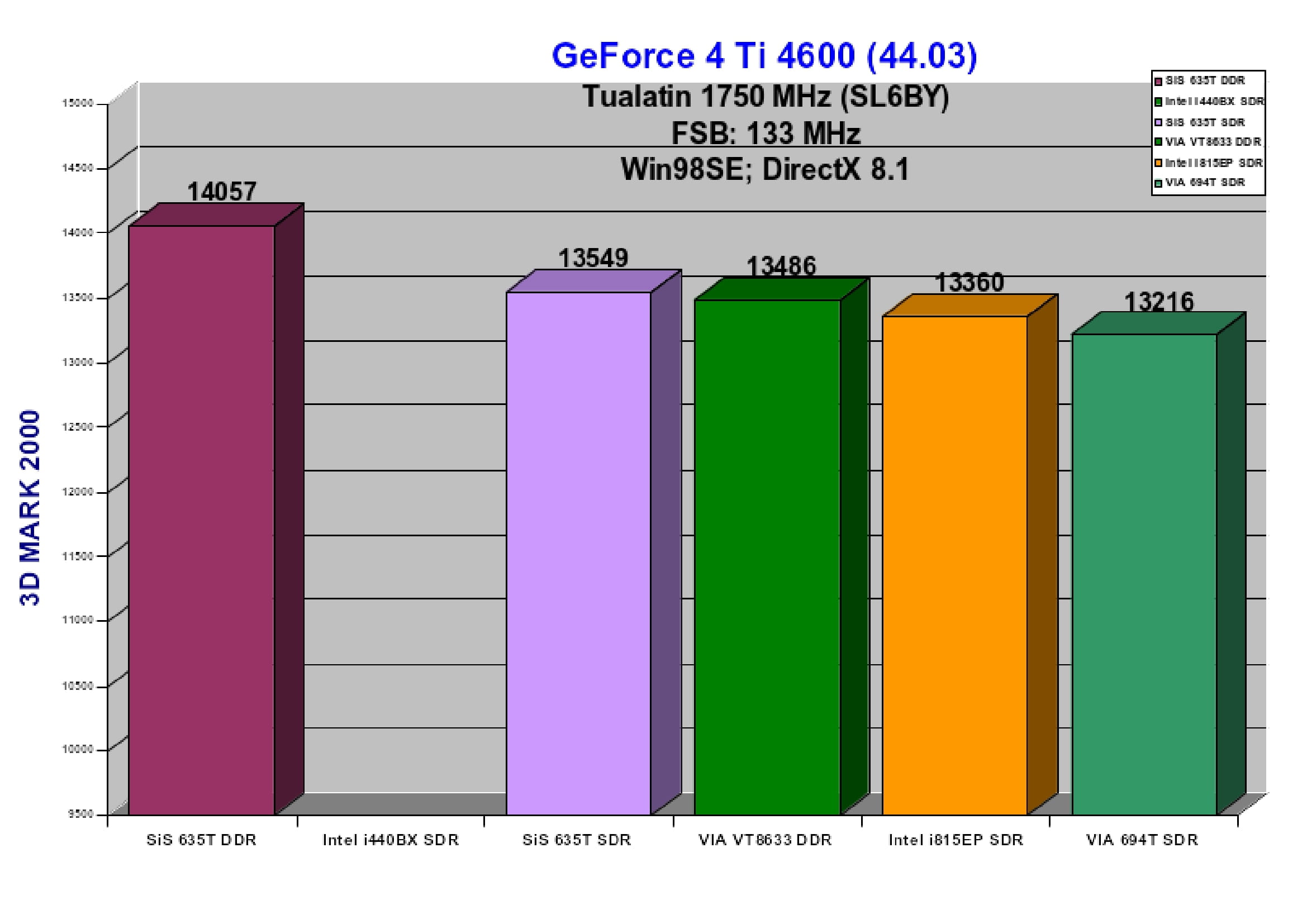
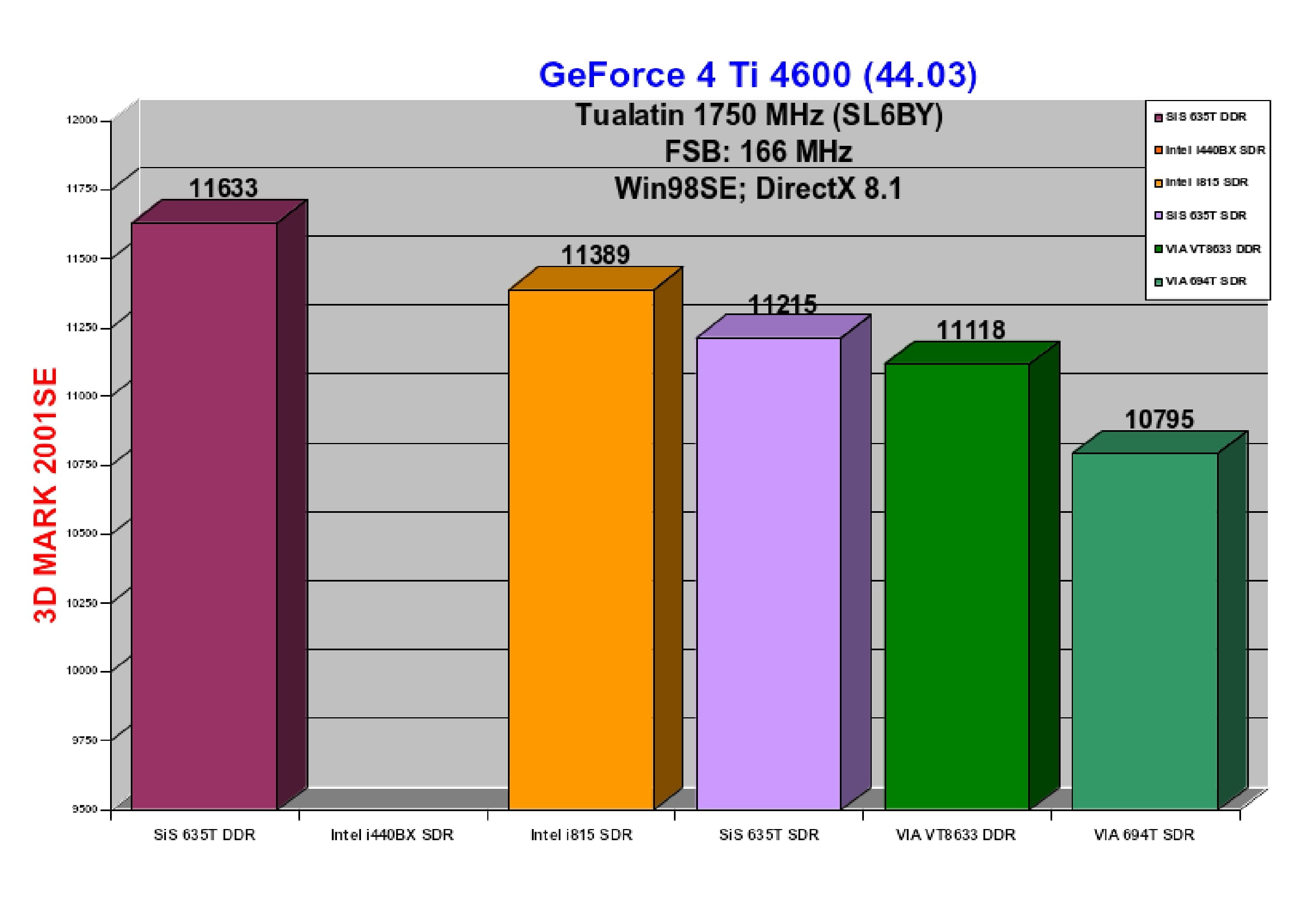
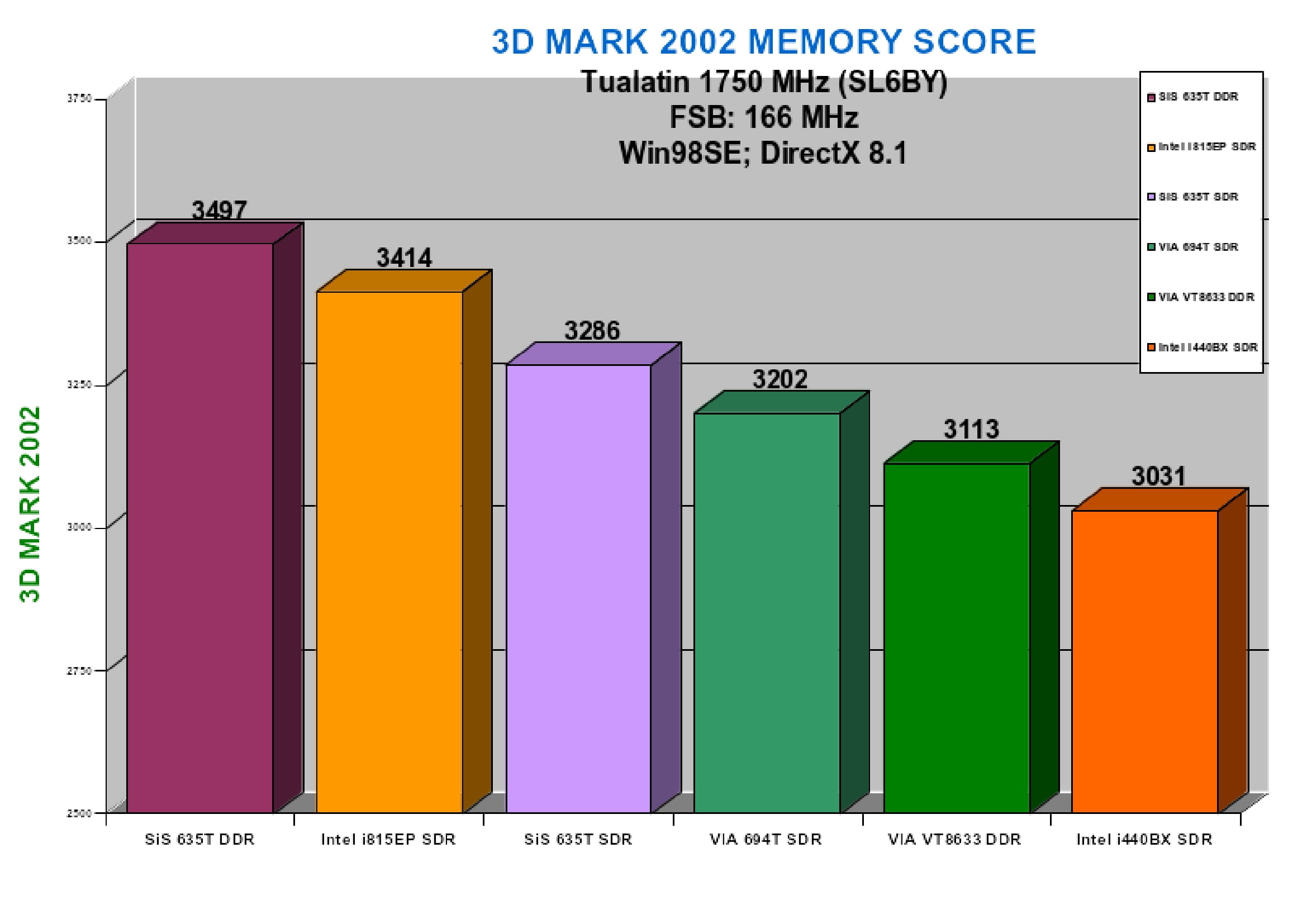
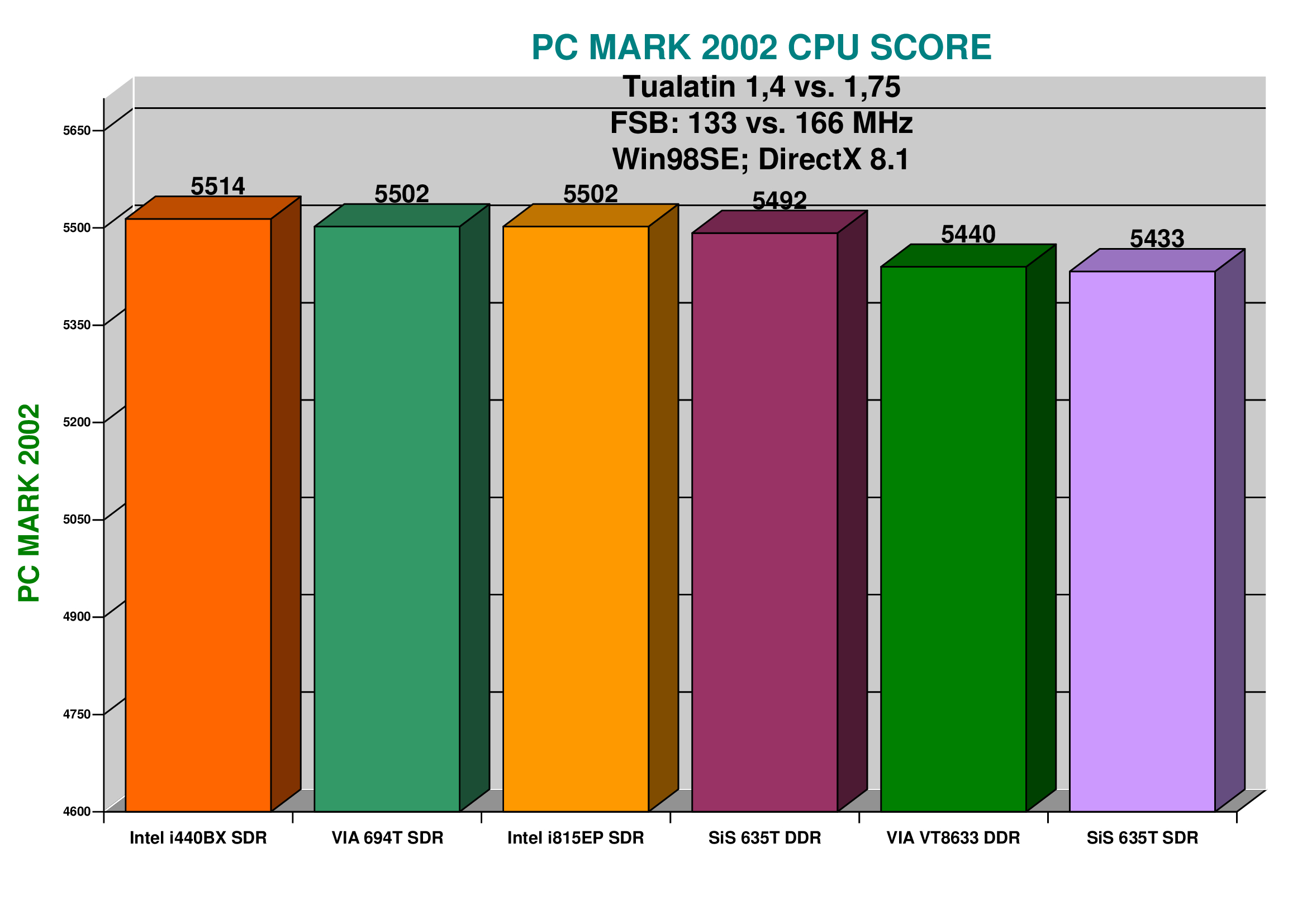
I had some luck to run PCmark2002 after many repetitions…. But It’s a pity I wasn’t able to run any 3D Mark benchmarks on Intel BX – We would have a brighter picture of the whole thing. In fact intelBX is the only chipset that can compete with SiS DDR.
We can see that in PC Mark 2002 intelBX was better than SiS 635T.
GAMES:
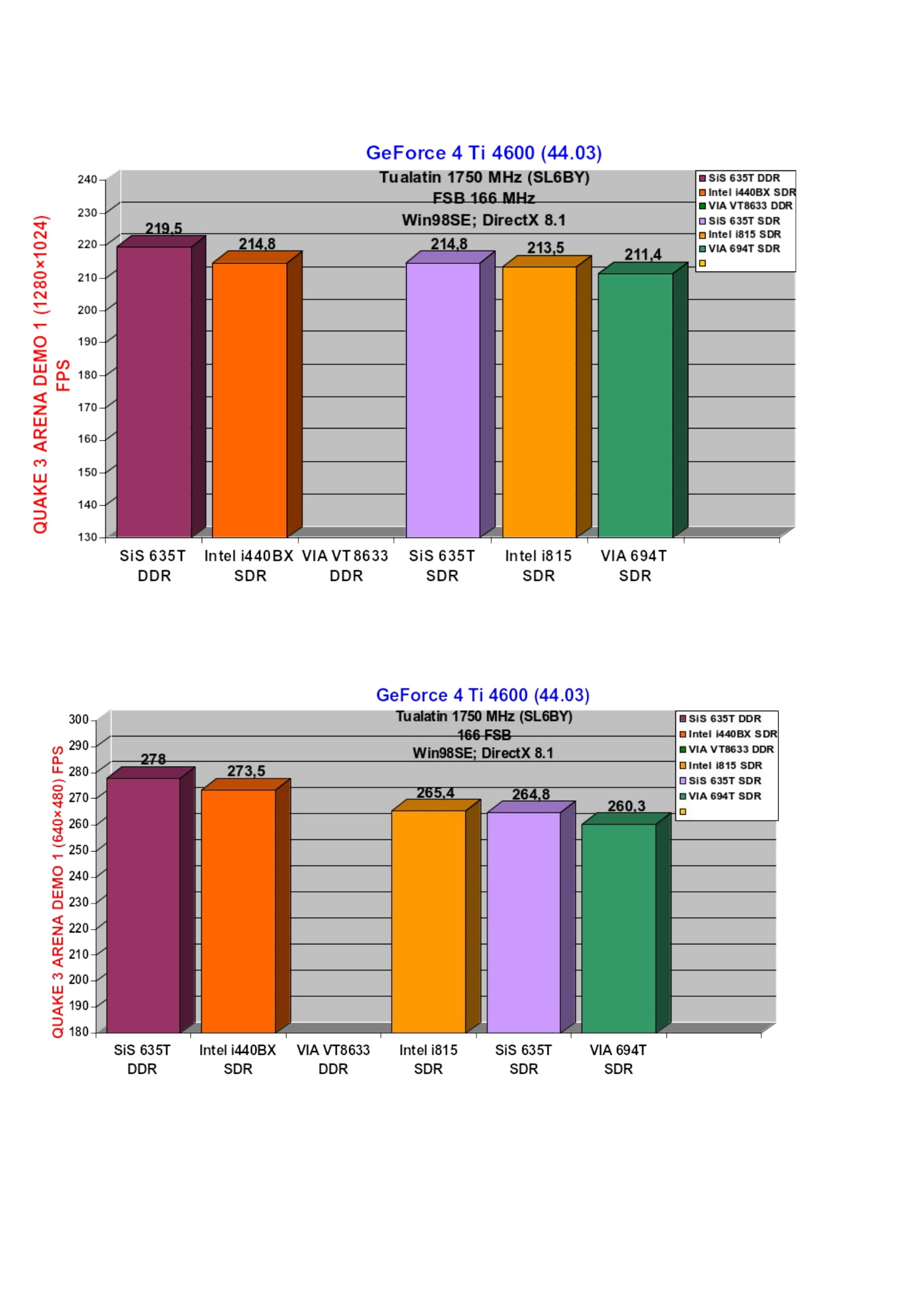
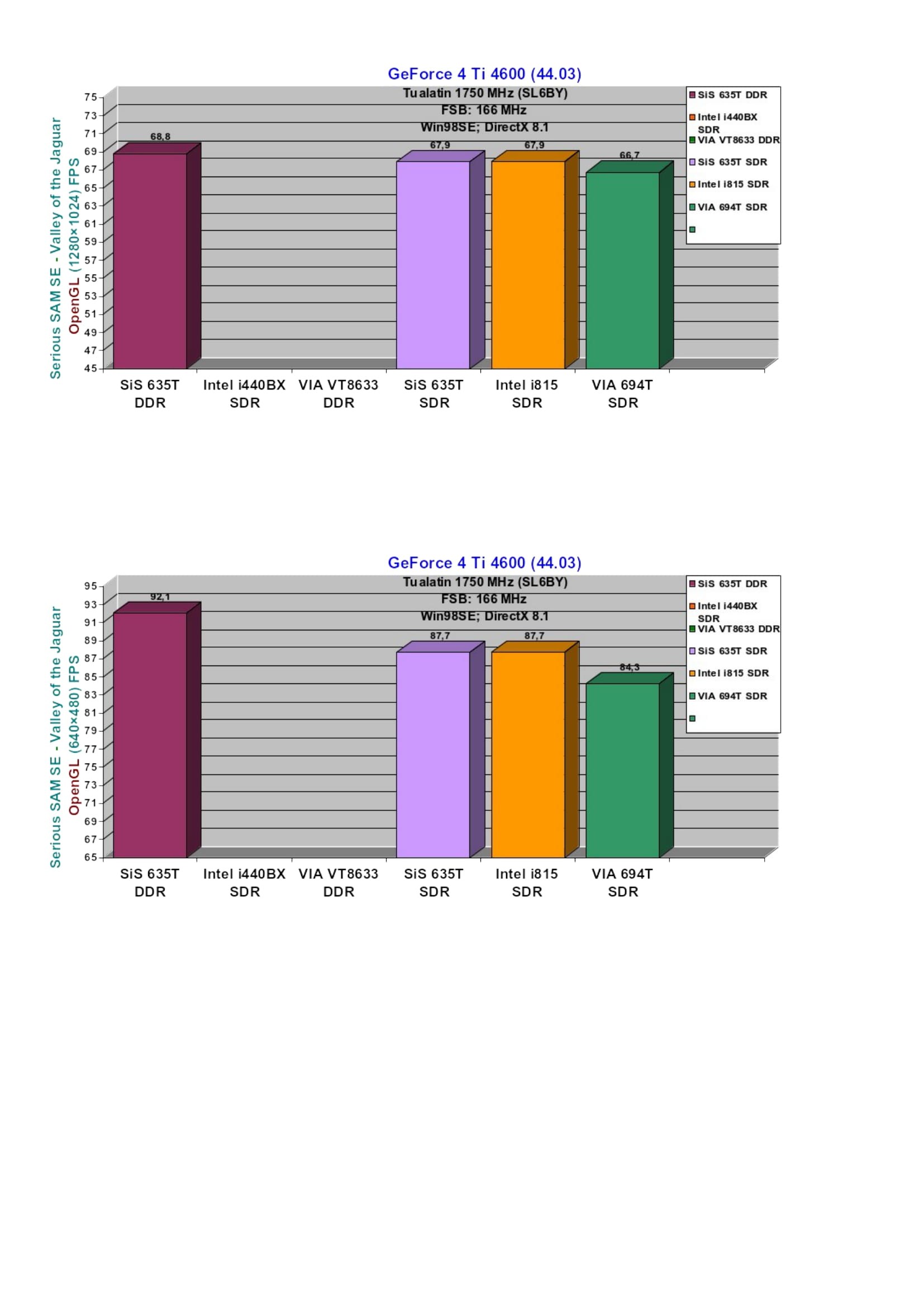
Finally, we can see those chips in action in real games. I was lucky enough to run Quake on most of the chipsets (I forgot to do it on VIA DDR...) and we can see that even the heavily overclocked AGP bus did not help Intel BX to beat SiS DDR 😀
In Serious Sam the winner is the same.
==================================================================
PART II
==================================================================
The second part is devoted to the performance gain from TualKing to TualGod on each platform.
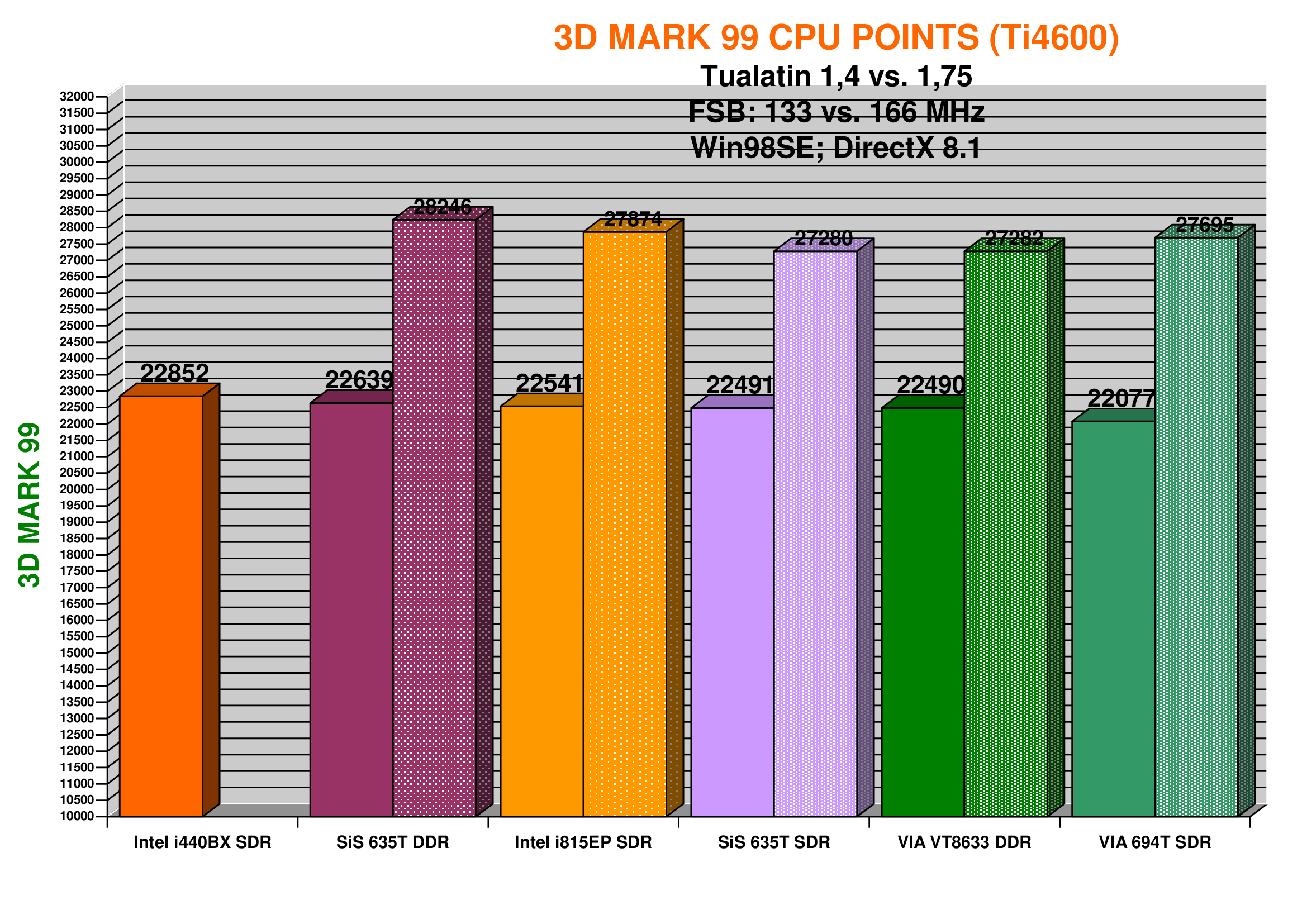
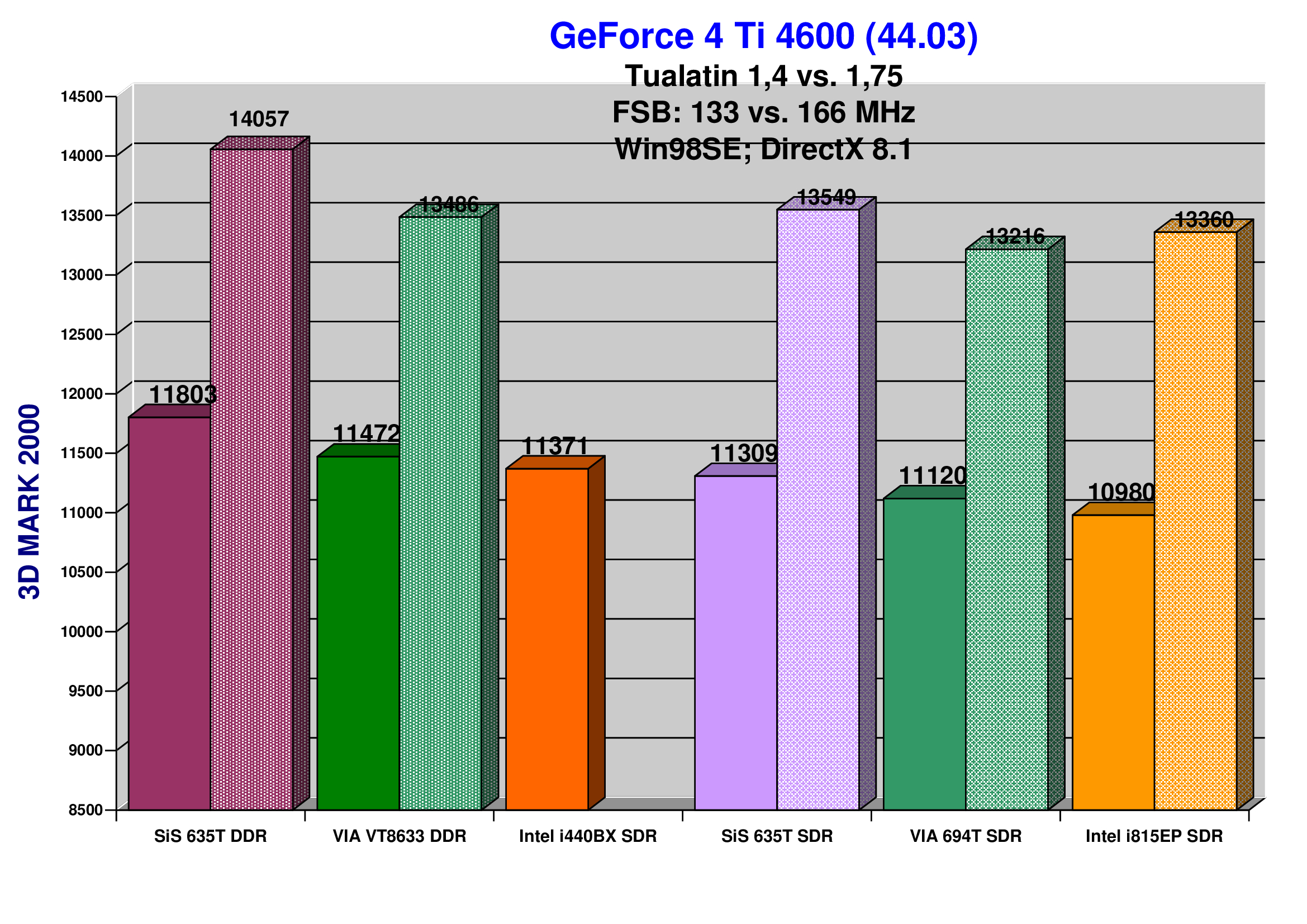
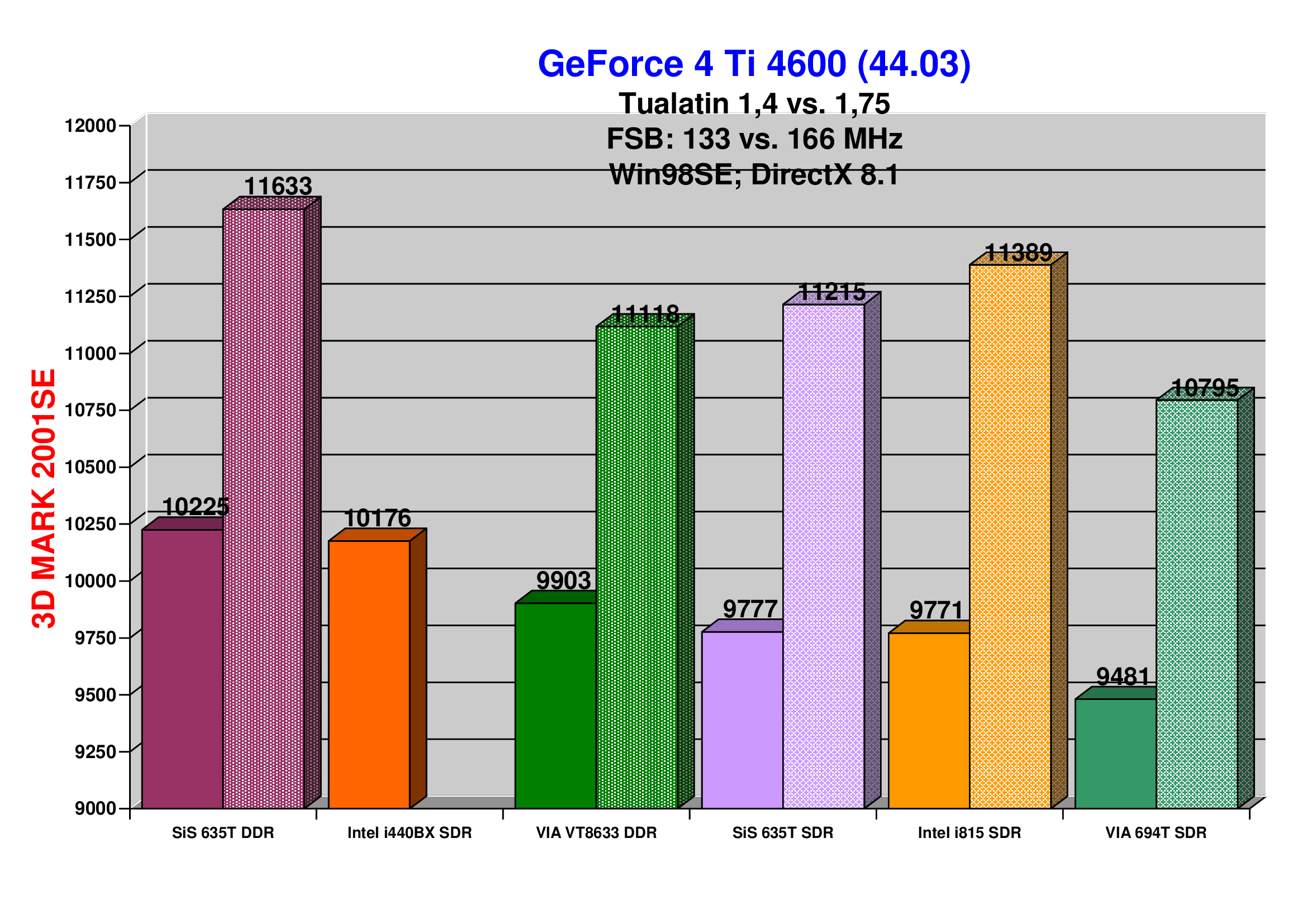
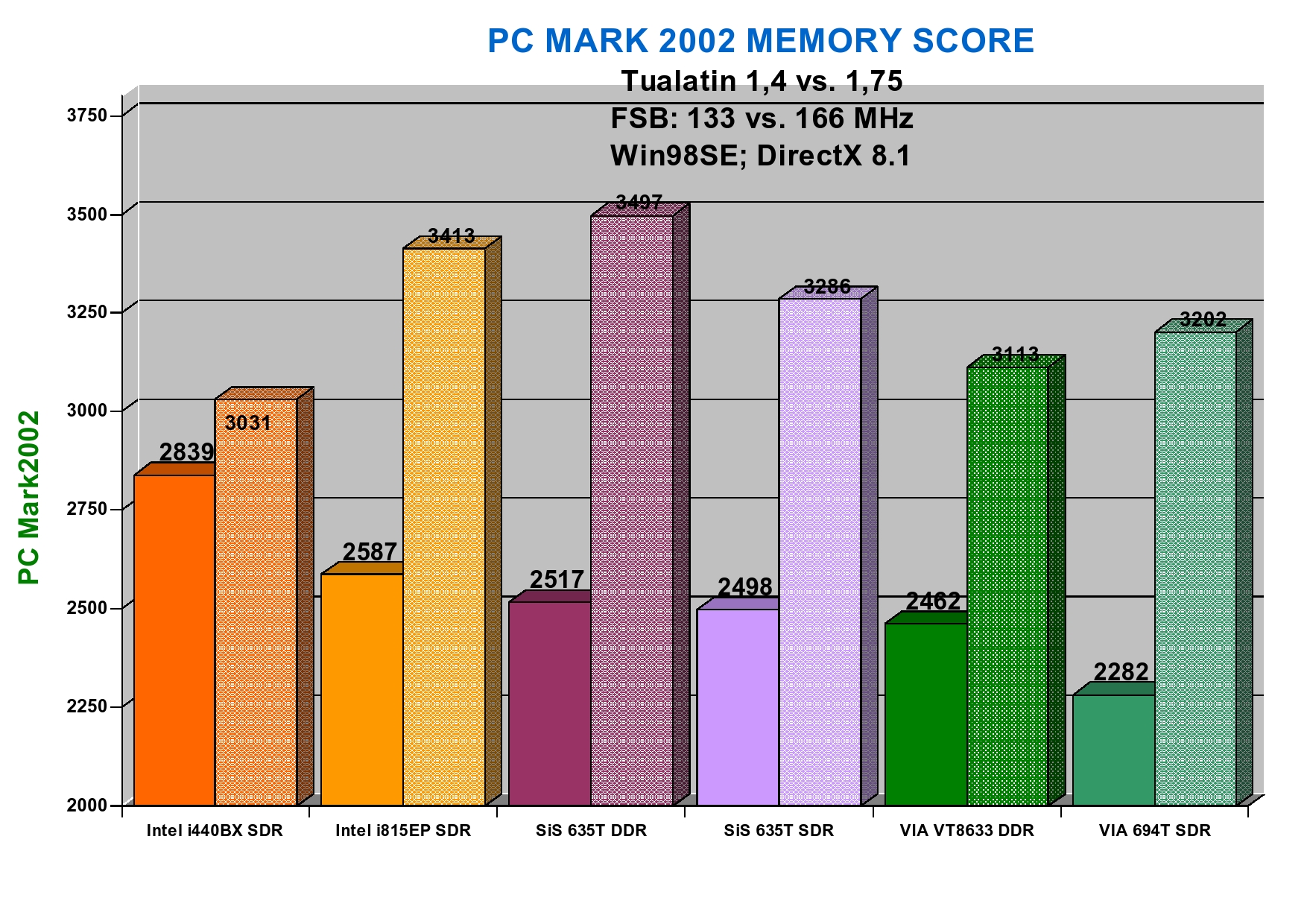
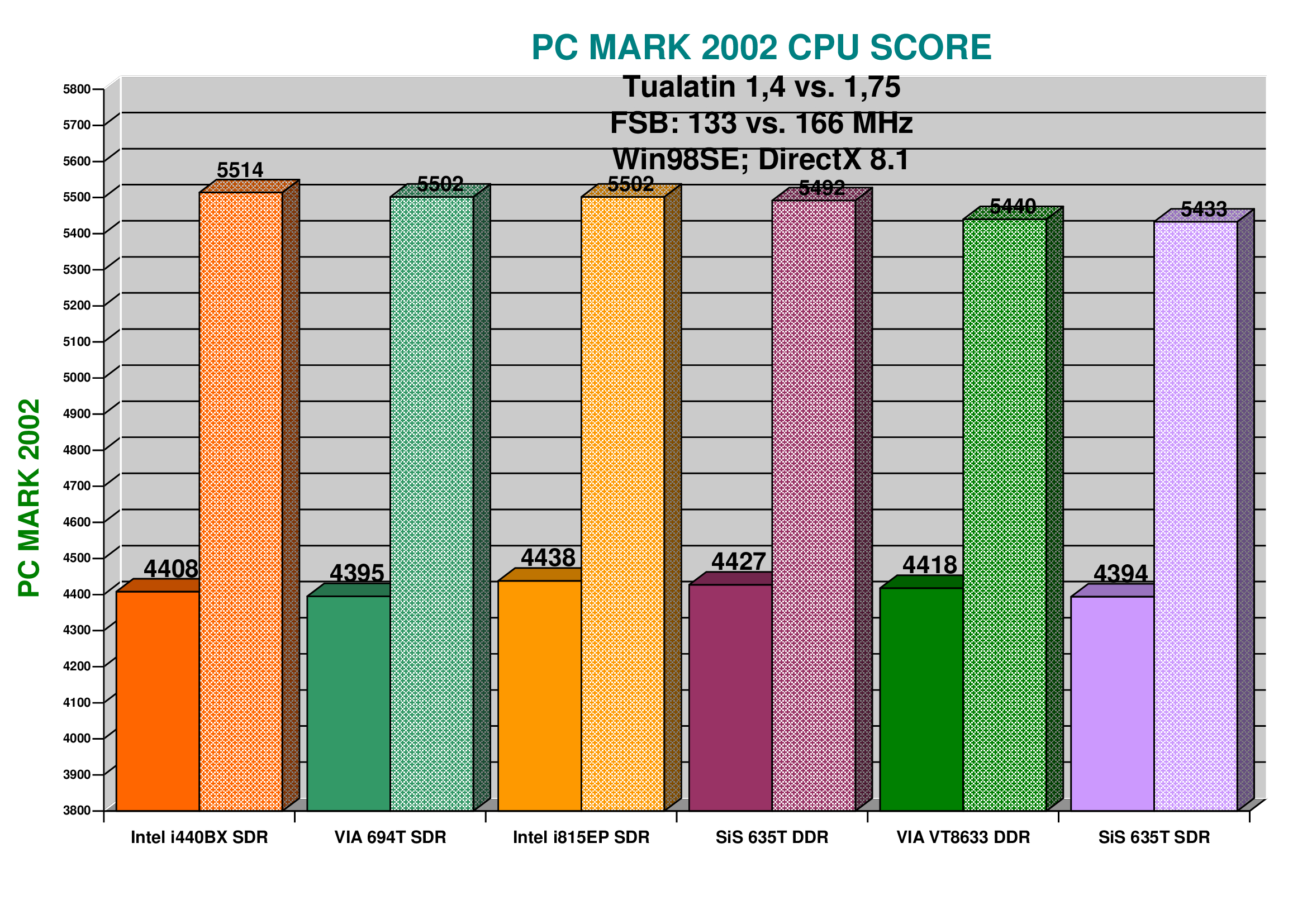
So, which motherboard seems to gain the most when overclocked?
Let’s take a look at the percentage gain:
3D Mark99
VIA SDR (22077 to 27695) = 25,45 %
SiS DDR (22639 to 28246) = 24,77 %
i815 (from 22541 to 27874) = 23,66 %
VIA DDR (22490 to 27282) = 21,31 %
SiS SDR (22491 to 27280) = 21,29 %
3D Mark 2000
Intel i815 (10980 do 13360) = 21,67 %
SiS SDR (11309 do 13549) = 19,81 %
SiS DDR (11803 do 14057) = 19,10 %
VIA SDR (11120 do 13216) = 18,85 %
VIA DDR (11472 do 13486) = 17,56 %
3D Mark 2001SE
Intel i815 (9771 to 11389) = 16,56 %
SiS SDR (9777 to 11215) = 14,71 %
VIA SDR (9481 to 10795) = 13,86 %
SiS DDR (10225 to 11633) = 13,78 %
VIA DDR (9903 to 11118) = 12,27 %
PC MARK 2002 Memory Test
VIA SDR (2282 to 3202) = 40,31 %
SiS DDR (2517 to 3497) = 38,94 %
Intel i815 (2587 to 3413) = 31,93 %
SiS SDR (2498 to 3286) = 31,54 %
VIA DDR (2462 to 3113) = 26,44 %
Intel BX (2939 to 3031) = 3,13 %
PC MARK 2002 PCU Test
ViA SDR (4395 to 5502) = 25,19 %
Intel BX (4408 to 5514) = 25,09 %
SiS DDR (4427 to 5492) = 24,06 %
Intel i815 (4438 to 5502) = 23,97 %
SiS SDR (4394 to 5433) = 23,64 %
VIA DDR (4418 to 5440) = 23,13 %
I didn’t go to details analyzing each result from SiSoft so I will just present one: SiS 635T with DDR!
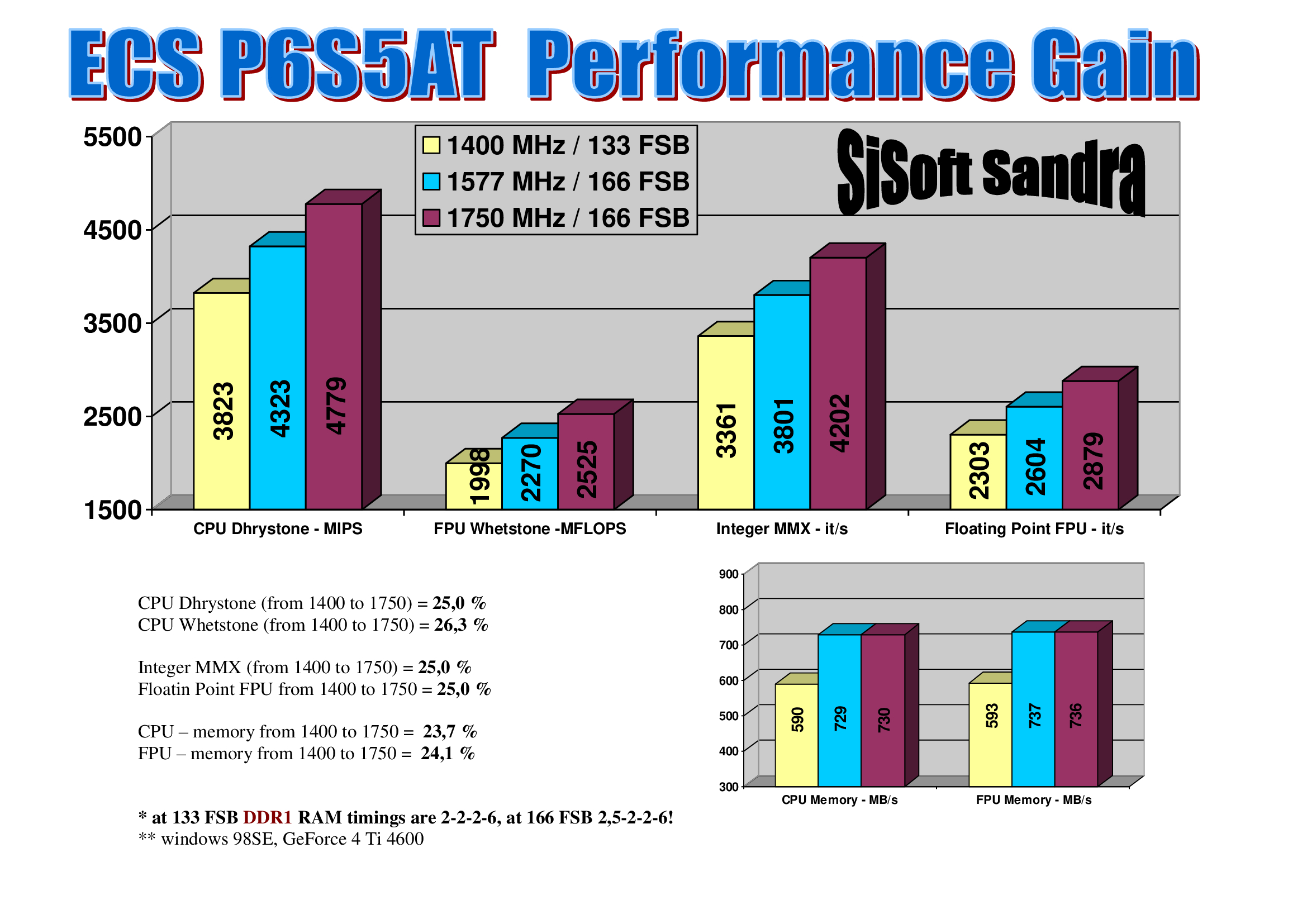
GAMES:
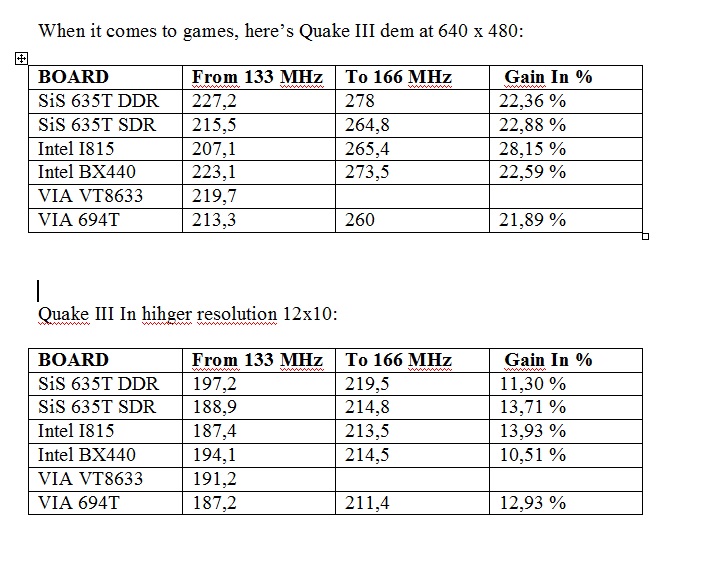
Next step is to compare those results with an AtlhonXP and Pentium4, but from me previous ovbservation (here) I reckon that SiS 635T with Tualatin-s SL6BY at 166 MHz is more or less similar in performance to AthlonXP 2500+. Obviously, a lot depends on the aplication and the motherboard we use that Athlon XP 😉
Congratulations to anyone who has finished reading this b*llsh*t 😜 If there is anybody who did read this and enjoyed it in any way and, for no reason, wants to support my dumb projects please help me out finding ex SiS or ECS engineers who worked there around 2000-2002 😀
